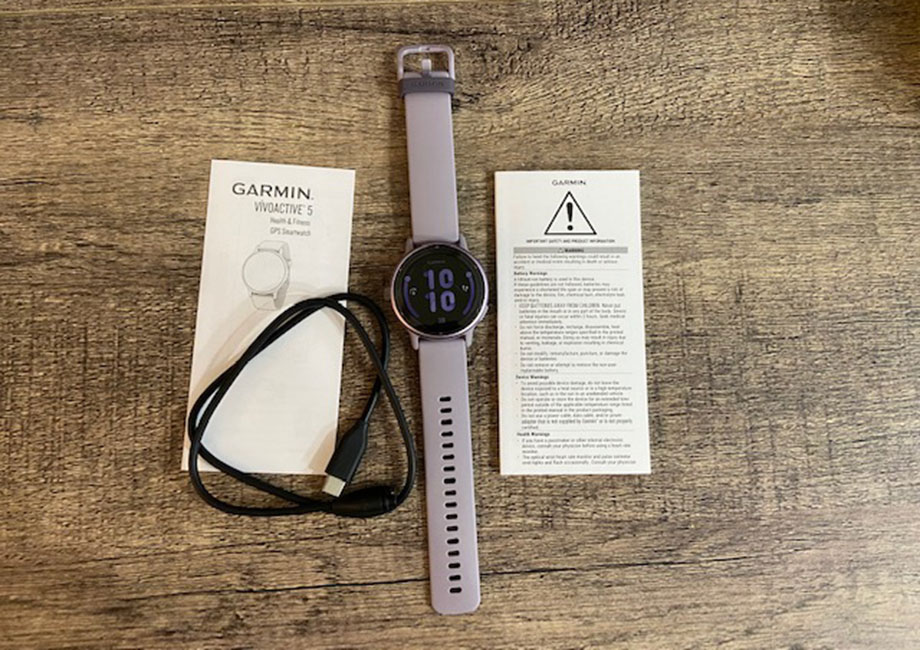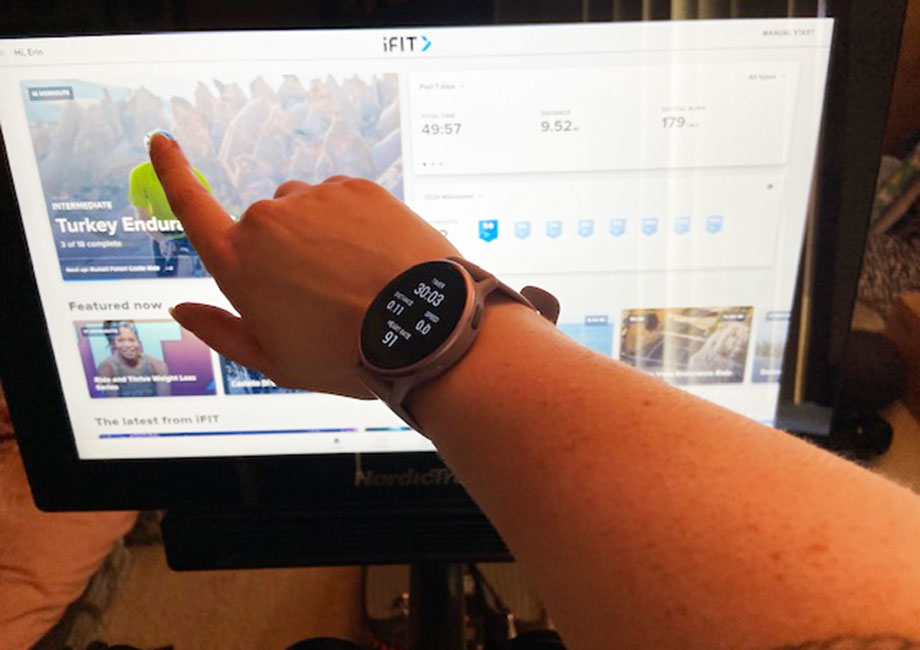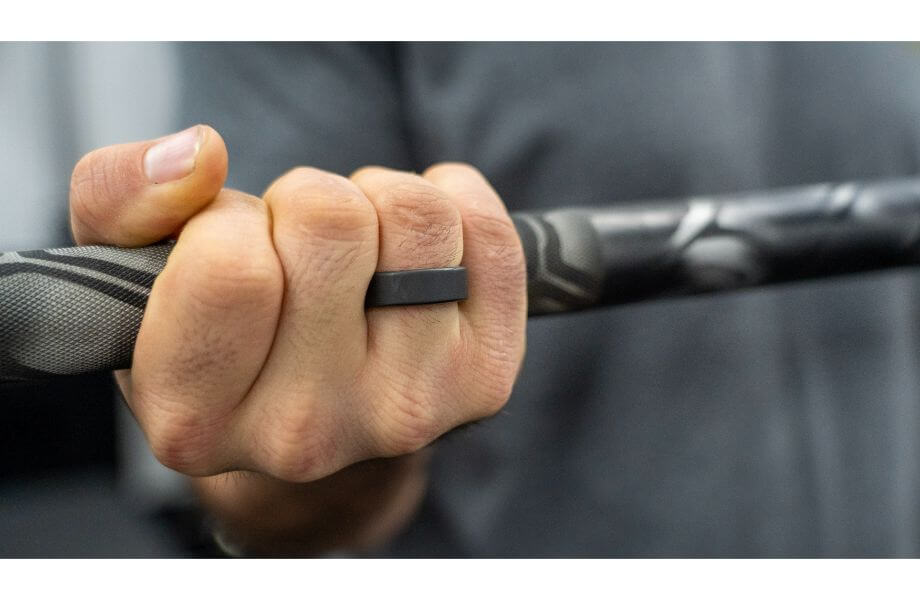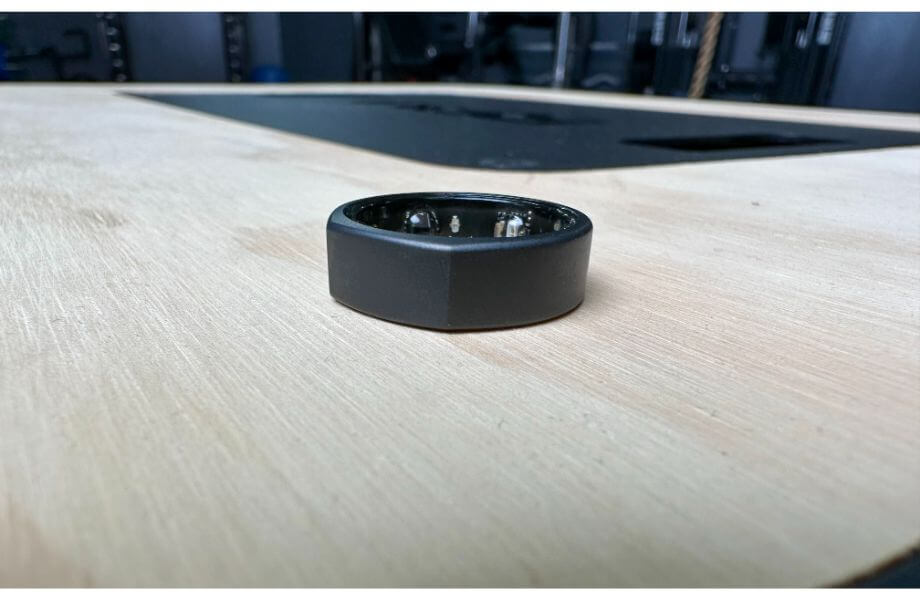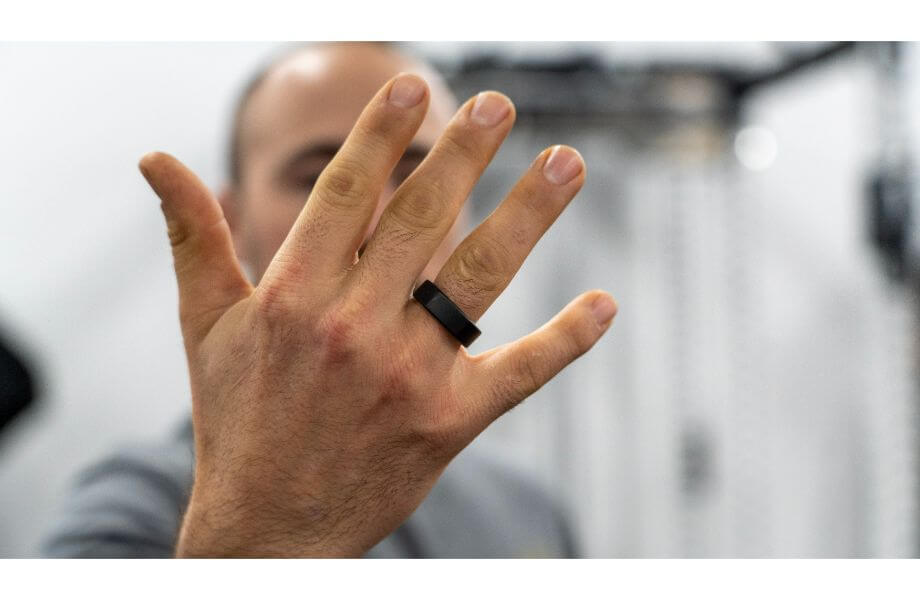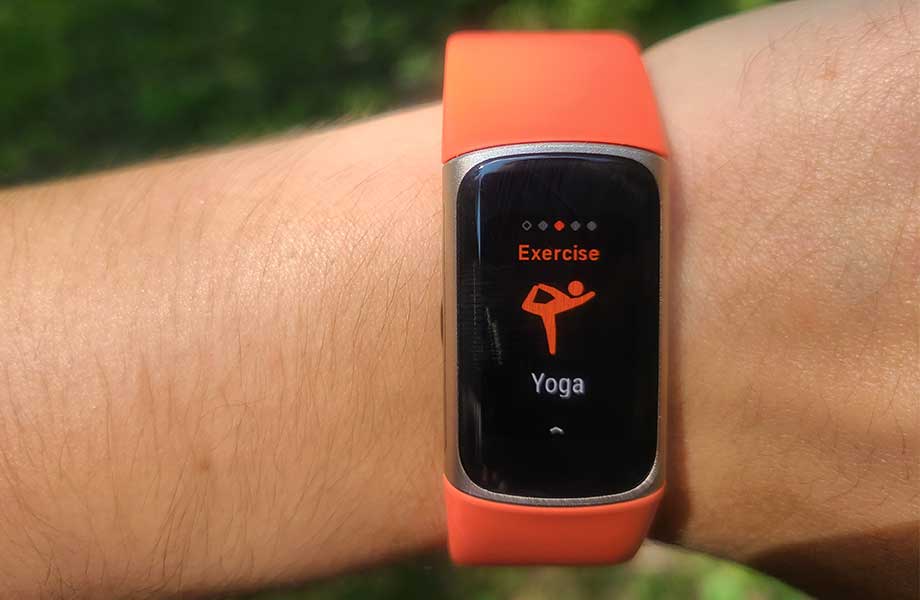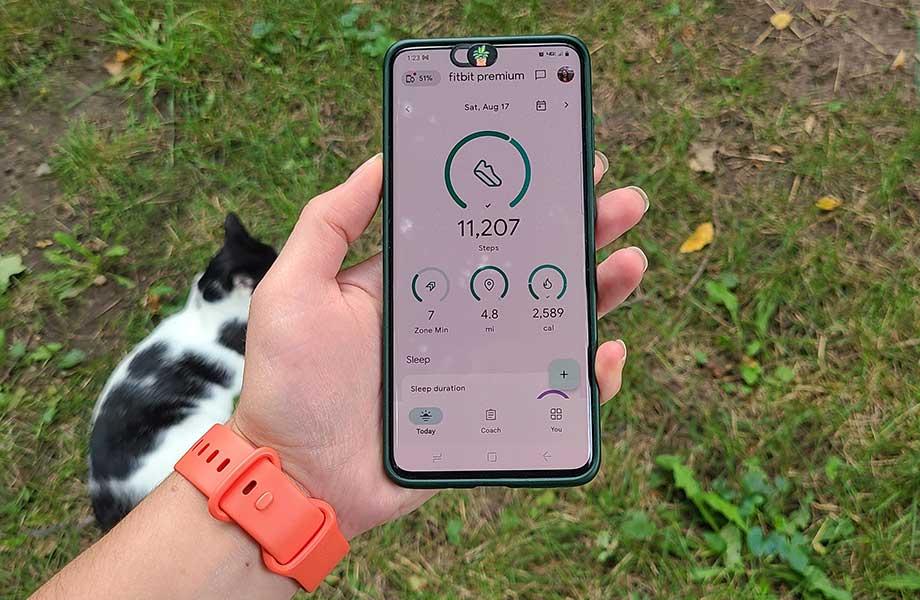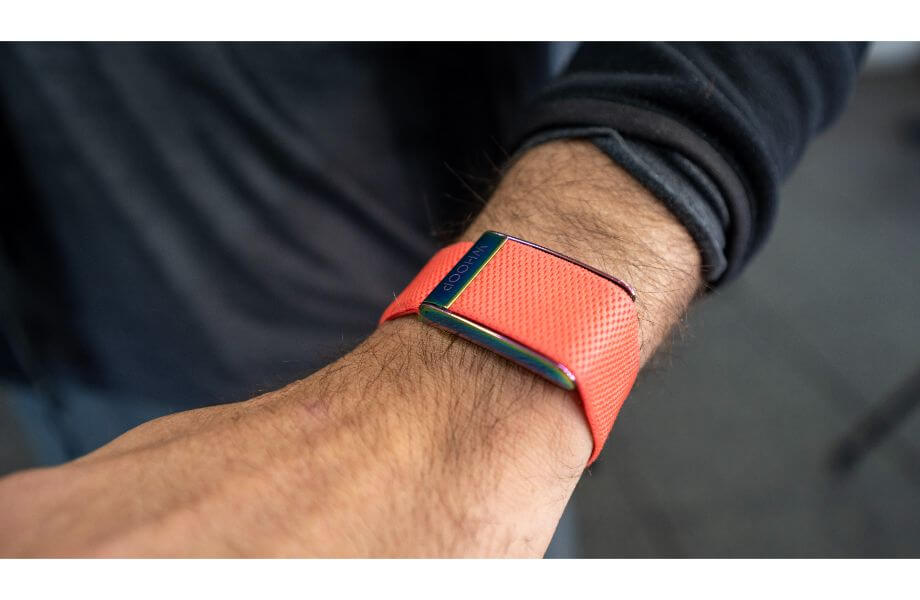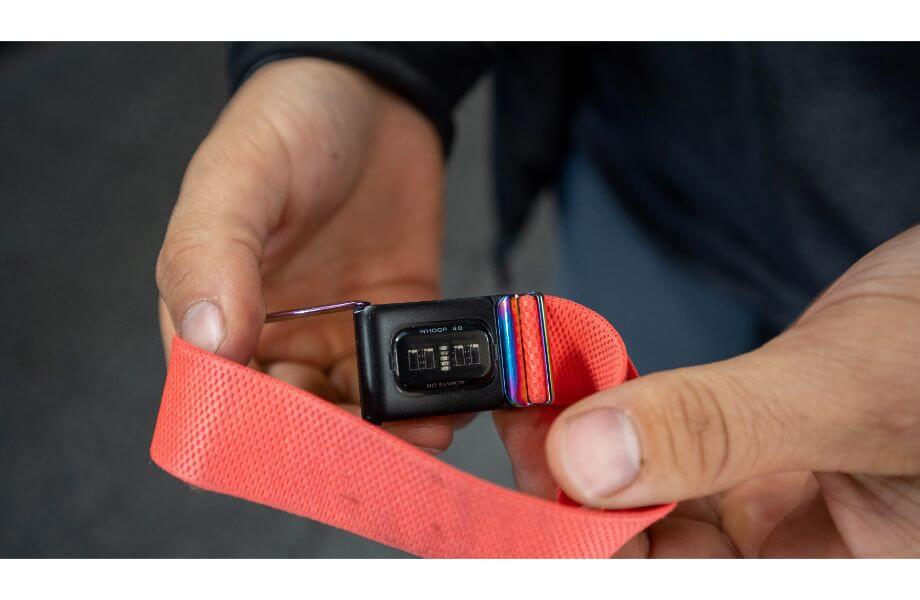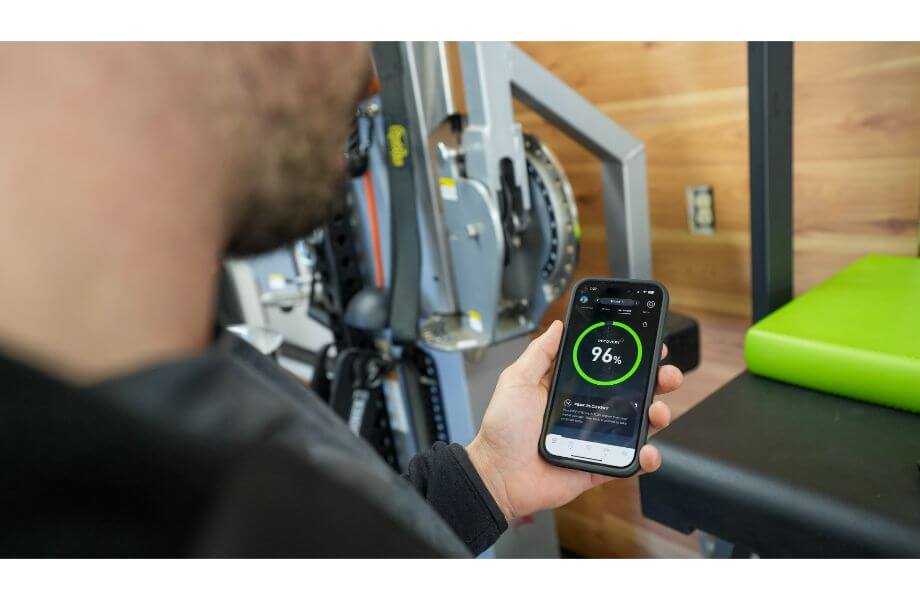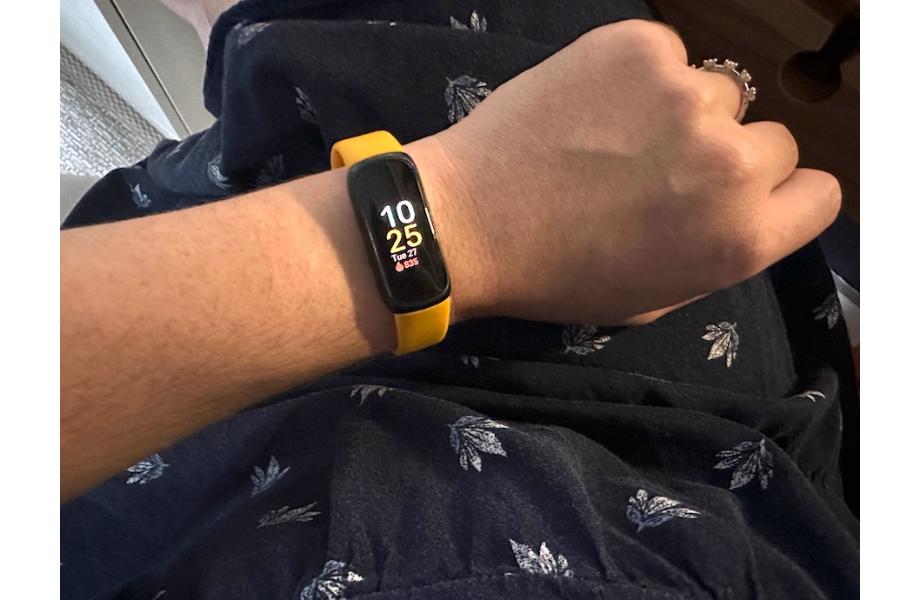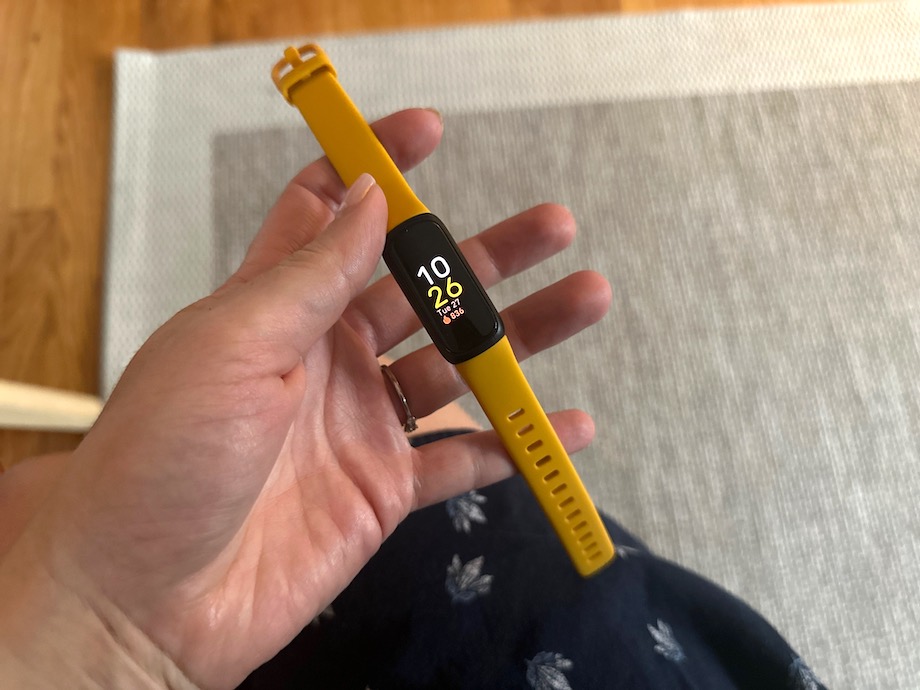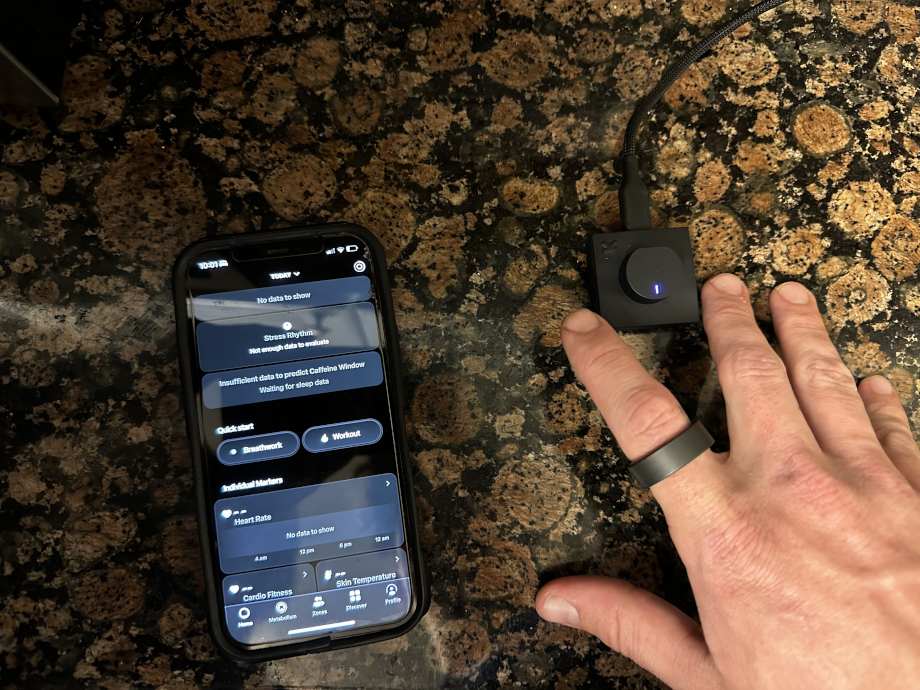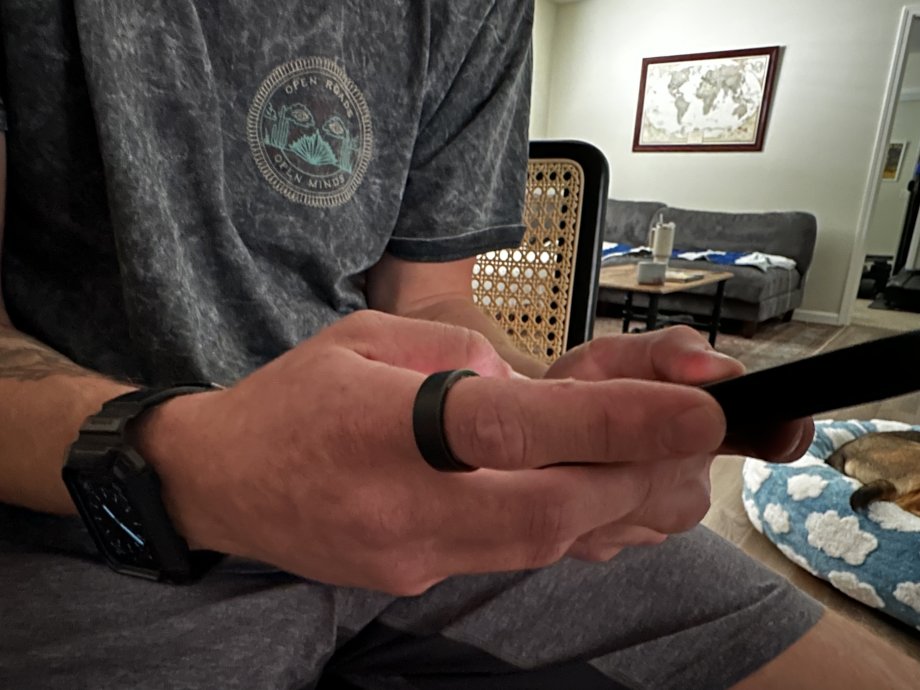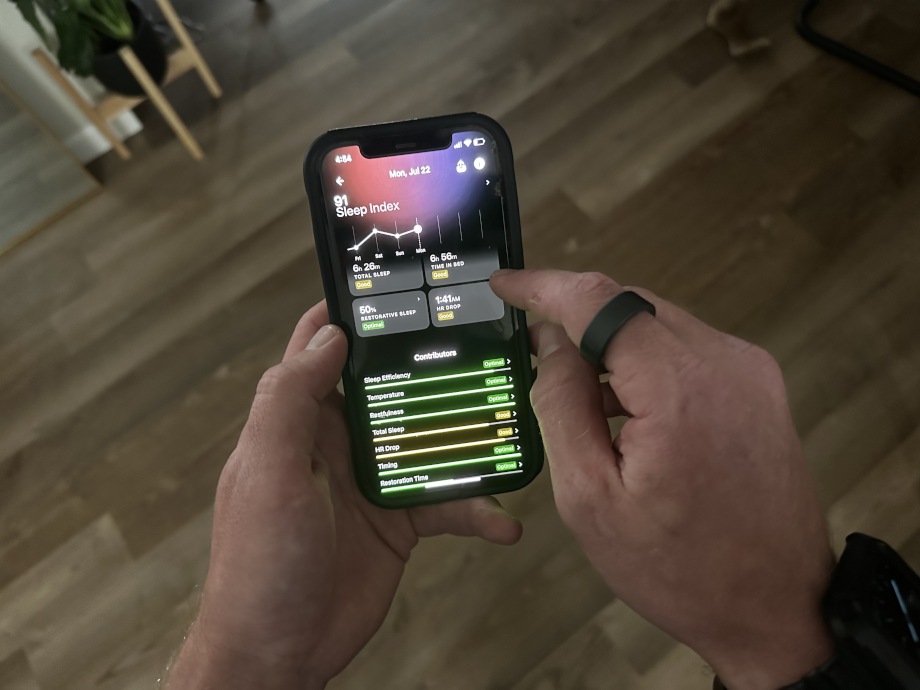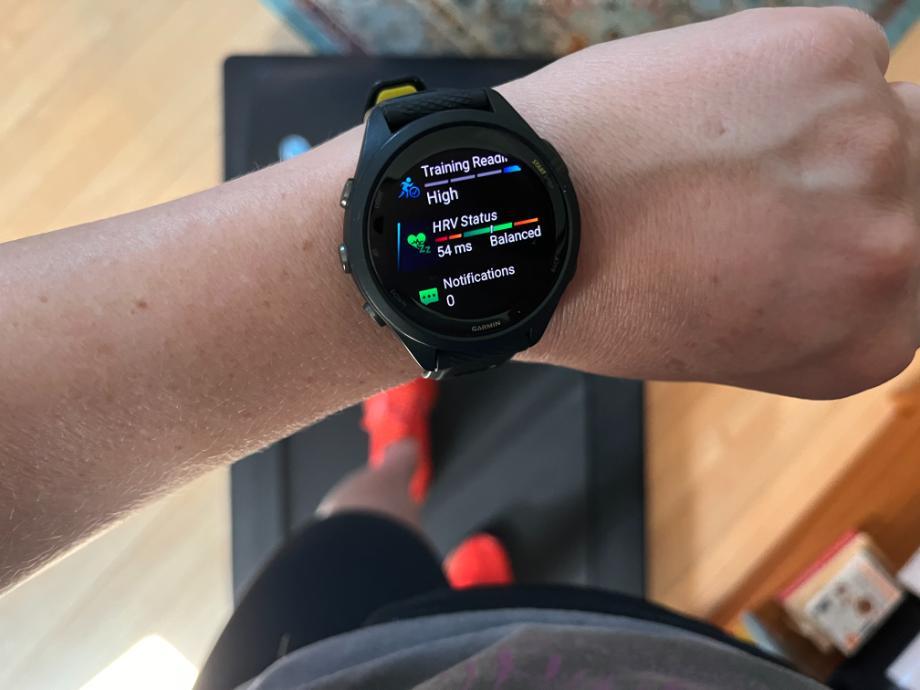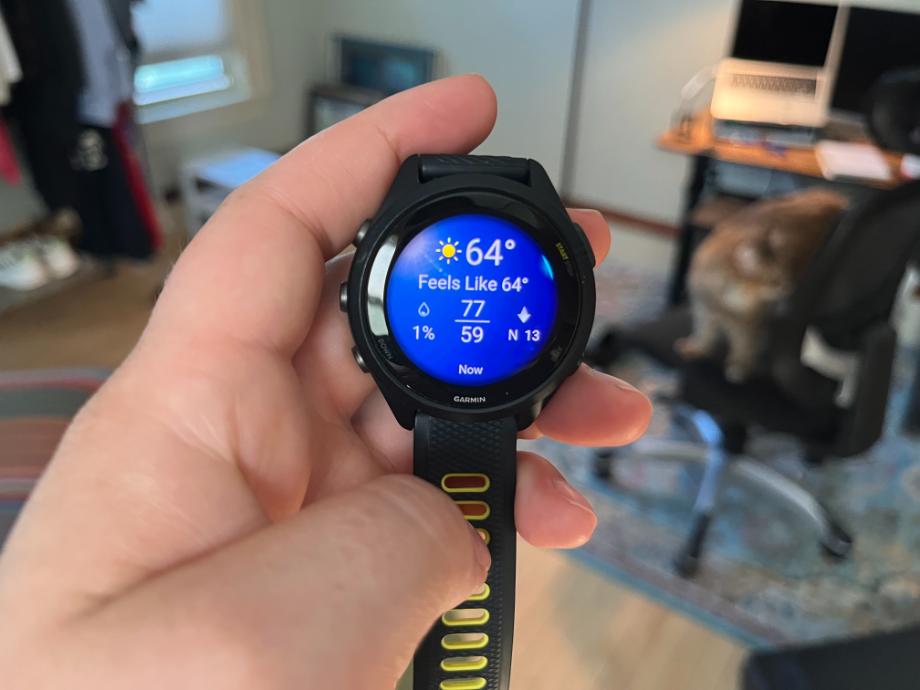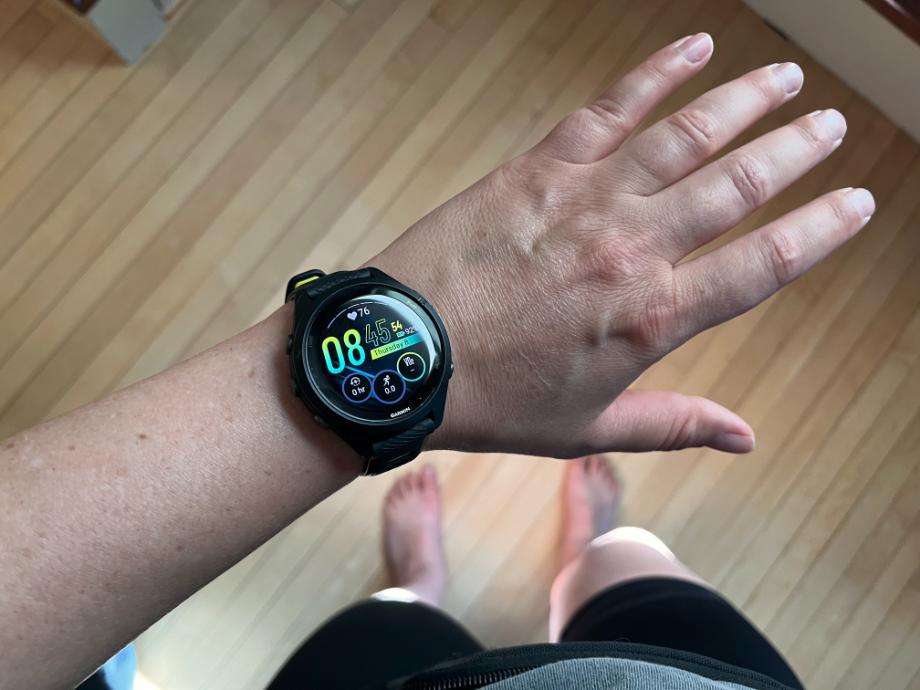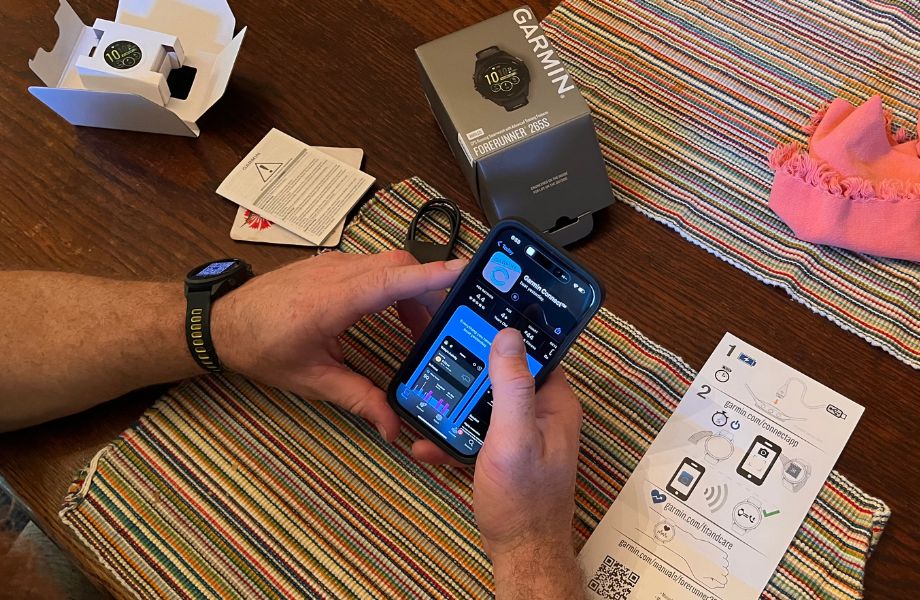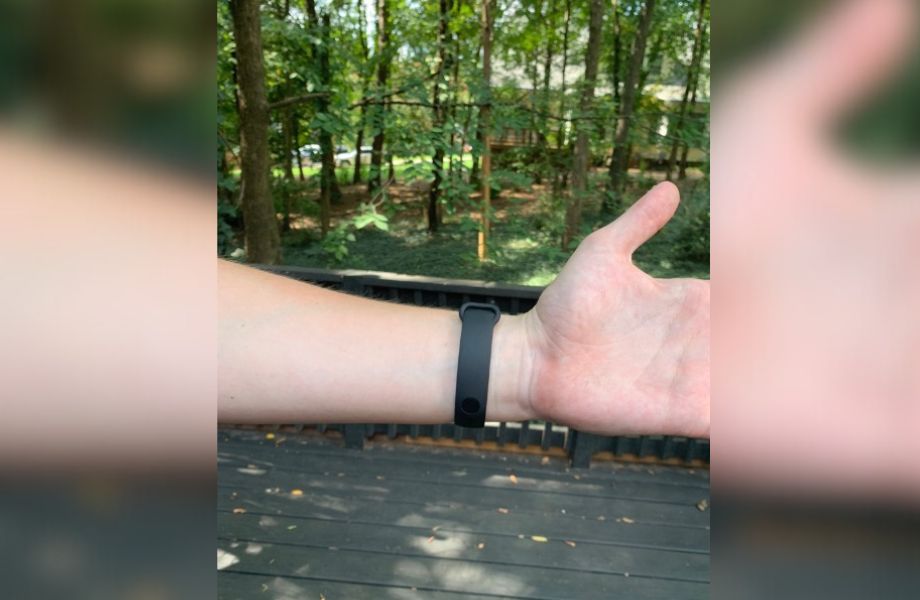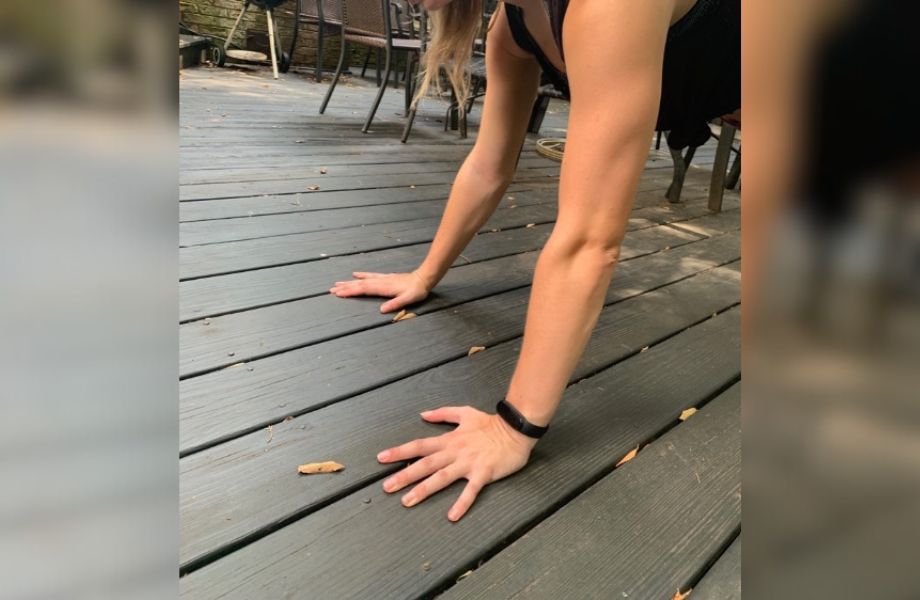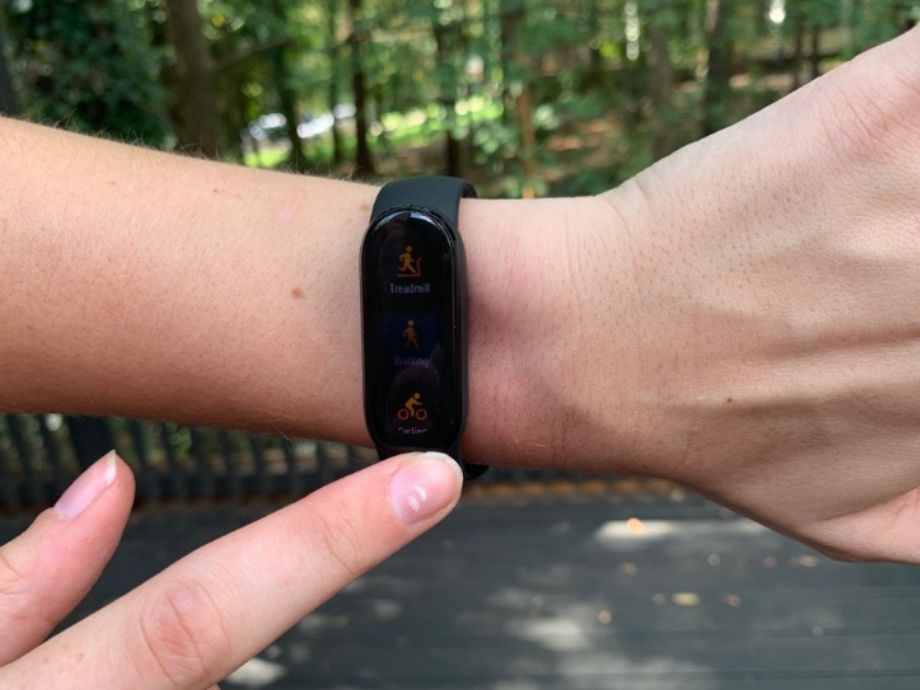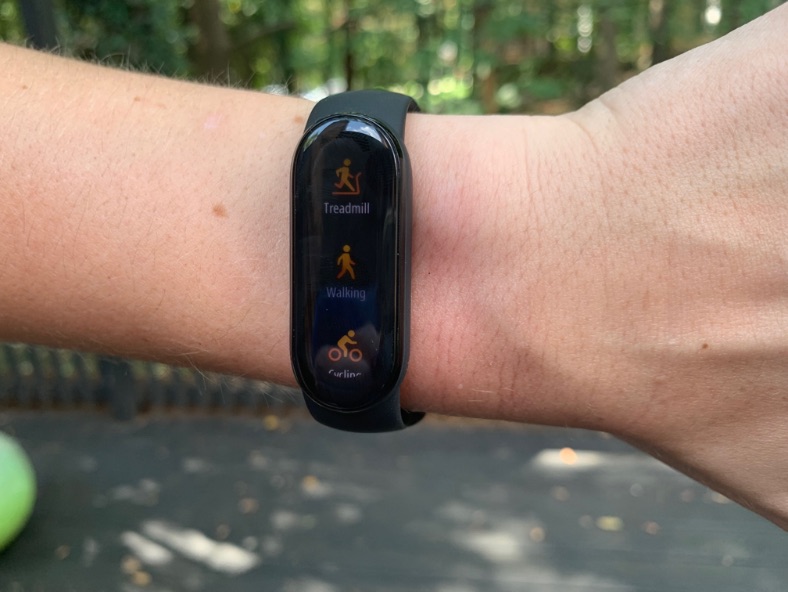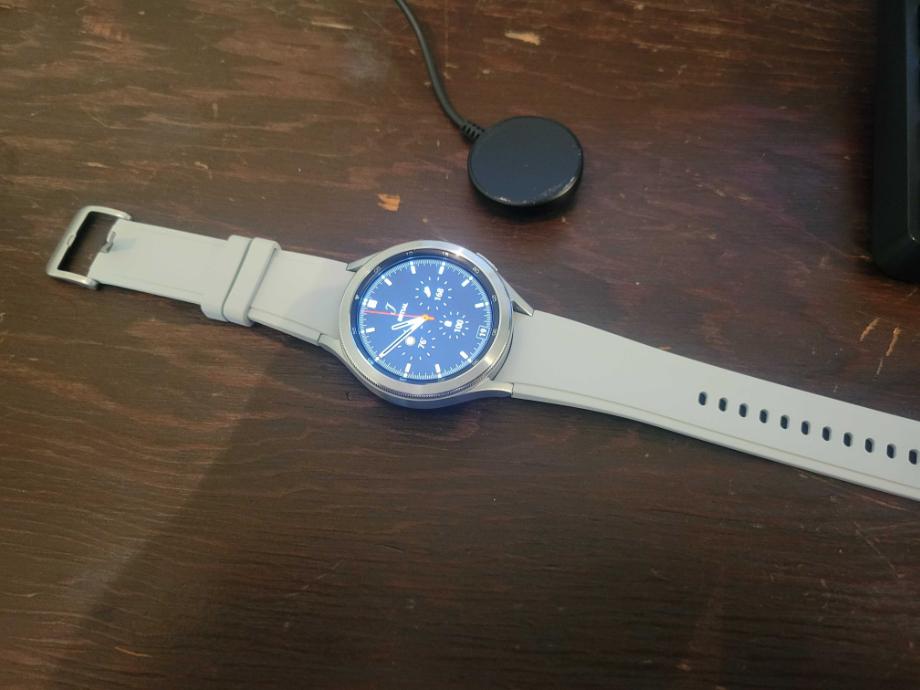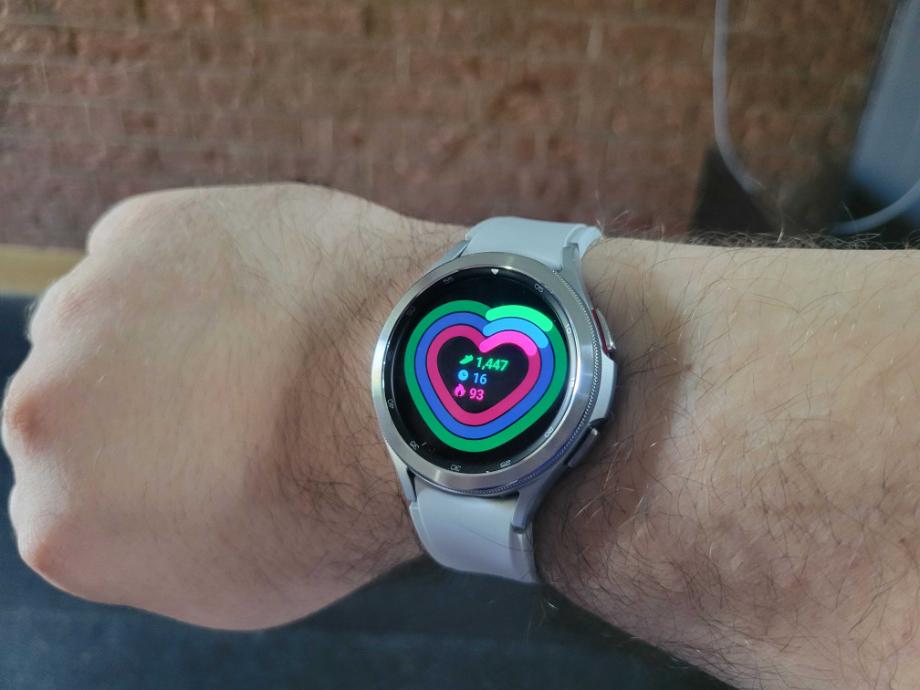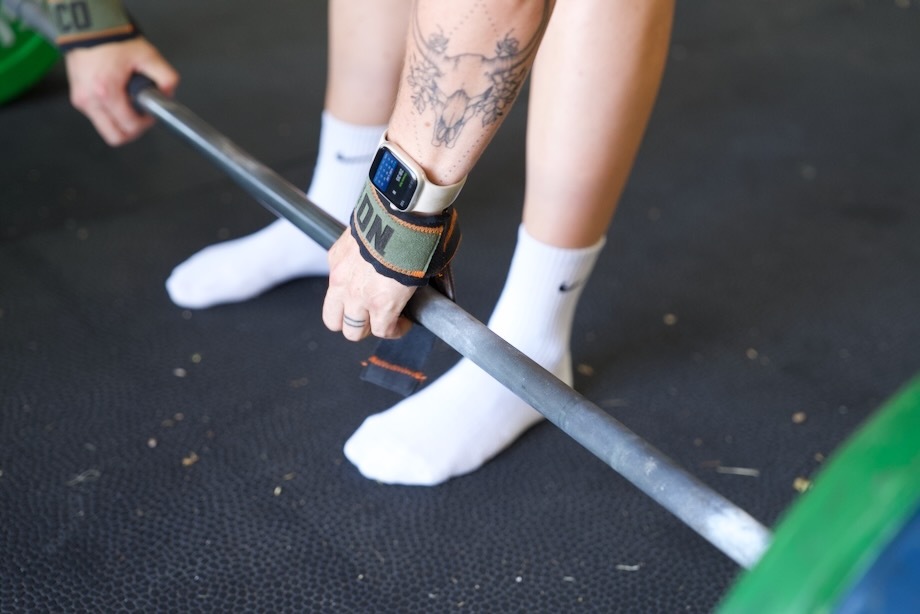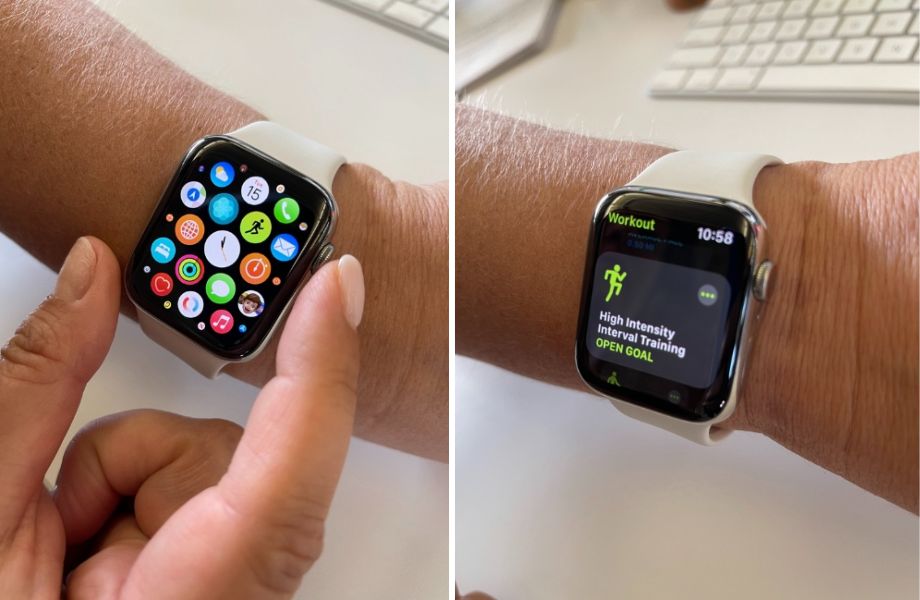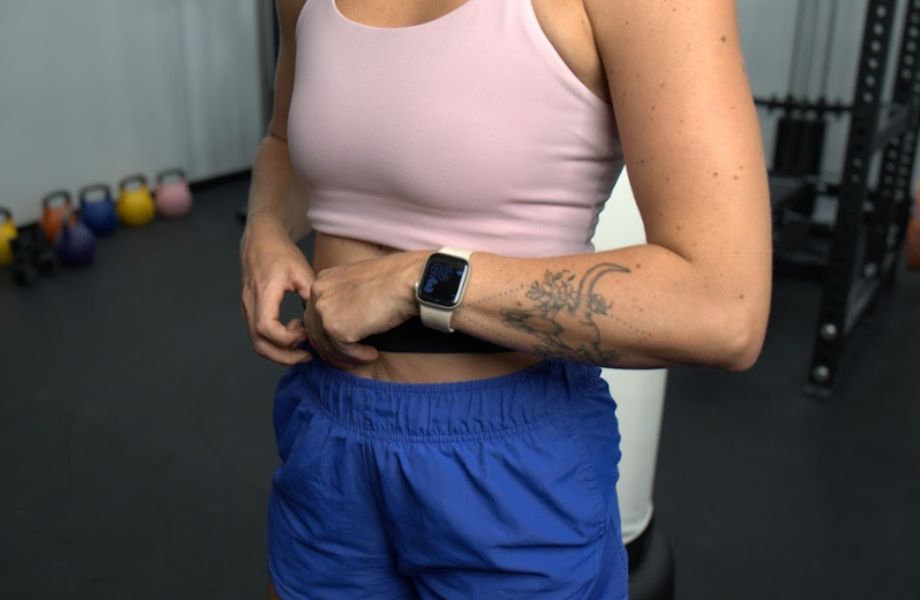We test and review fitness products based on an independent, multi-point methodology. If you use our links to purchase something, we may earn a commission. Read our disclosures.
Fitness trackers are not a new invention. For decades, people have been counting their daily steps with things like primitive pedometers. Today’s wearables have much more to offer in terms of tech capabilities, with some being able to automatically recognize what type of exercise you’re doing. Many, including the world-famous Apple Watch, even allow you to text and answer calls.
When looking at the best fitness trackers, we’re more interested in how they can potentially help people live healthier lives. To that end, we had a team of expert product testers who live and breathe fitness—from triathlons, to CrossFit, to weightlifting, and more—test out the top models to see which ones you should use to keep yourself on track (puns are always intended at GGR).
We tested features like move alerts, sleep tracking, GPS, activity tracking, stress monitoring, and more. While we tested the smartphone features, like playback control and texting, they weren’t our main priority.
Our testers used the smartwatches, and a few tracker rings, for a few weeks before rating each one from 1 to 5 based on the following categories:
- Tech capabilities: How many exercises or activities could it track? Does it come with automatic exercise recognition? What other things can you do with the watch?
- Durability: How long is the battery life? Can it be worn while swimming or showering? Can it be dropped and still work?
- Aesthetics: How nice does it look?
- Adjustability: Can it be adjusted to comfortably fit your wrist and others?
RELATED: Best Smartwatch Black Friday Sales
The 12 Best Fitness Trackers
- Best Overall Fitness Tracker: Garmin vivoactive 5
- Best Fitness Tracker Ring: Oura Ring
- Best Fitness Tracker for Everyday Use: FitBit Charge 6
- Best Fitness Tracker for Sleep: Whoop 4.0
- Best Fitness Tracker With Heart Rate Monitor: FitBit Inspire 3
- Most Stylish Fitness Tracker: UltraHuman Ring Air
- Best Fitness Tracker Watch: Withings ScanWatch Light
- Best Fitness Tracker for Running: Garmin Forerunner 265
- Best Budget Fitness Tracker Xiaomi Mi Smart Band 7
- Best Battery Life Fitness Tracker: Garmin Fenix 7x Sapphire
- Best Fitness Tracker for Android: Samsung Galaxy Watch5
- Best Fitness Tracker for iPhone Users: Apple Watch Series 9
- Best Garmin Fitness Tracker: Garmin Forerunner 965
Best Fitness Tracker Video Review

Best Fitness Tracker Overall: Garmin vivoactive 5
Good for: People who want a fitness tracker with lots of features and built-in GPS
Best Overall
Garmin Vivoactive 5
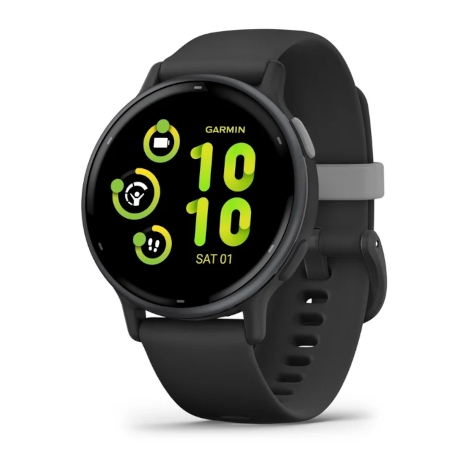
Product Highlights
Fitness tracker with up to 11 days of battery life
Available in 4 colors
Over 30 sports apps and workouts
Tracks pushes and built-in workouts for wheelchair users
Pros & Cons
Pros
- Available in 4 colors
- Over 30 sports apps and workouts
- Tracks pushes and built-in workouts for wheelchair users
- 11 days of battery life
Cons
- Affordable, but more expensive than other fitness trackers
- Can have a learning curve to new users
Bottom Line
Available in four different colors, the Garmin vivoactive 5 is one of their more affordable fitness trackers, costing just under $300. With a variety of sports apps and workouts available, the vivoactive 5 sets itself apart with built-in workouts and a push tracker for wheelchair users.
The Garmin vivoactive 5 might not be as popular as other fitness trackers, but after testing dozens of them we haven’t found a smartwatch that provides as much value It feels comfortable even after hours of use, can track a wide range of health metrics and activities, sends alerts from your smartphone, and has an 11-day battery life.
Erin Chancer, GGR senior editor and a certified personal trainer, says in her Garmin Vivoactive 5 review that the regular movement reminders have forced her to be more active. “As someone who’s regularly anchored to my desk/computer, this was a game-changer,” she says.
Garmin’s vivoactive was one of the few models that received a 5 out of 5 on tech capabilities. “Synced easily to my iPhone and sends me all my notifications in real-time,” she says. “It can also track daily steps, sleep health, stress levels, fluid intake, hearth rate, and breathing.”
RELATED: Fitbit vs Garmin
Other features include:
Women’s health (menstruation) monitoring
- Abnormal heart alerts (low and high)
- Stress monitoring
- Sleep coach
- Blood oxygen monitor
The watch’s aesthetics and adjustability scored a 4.5 and 5 out of 5, respectively. “I went with the light lavender color and love the way it looks and the softness of the band,” she says. “I have smaller wrists, so while the watch face takes up a lot of real estate, it doesn’t feel too bulky.”
On adjustability, she says “The watch band is a pliable rubber that is easy to adjust.”
Her one warning is that it’s not as intuitive as other fitness trackers she’s used. “I wouldn’t necessarily recommend this for beginners or those who aren’t as tech-savvy (myself included),” she says. “I’ve had to be patient with myself while navigating the controls.”
| Size | Fits wrists with a circumference of 125-190 mm |
| Weight | 36 g |
| Display | AMOLED screen with 1.2″ diameter |
| Battery life | Up to 11 days (5 if display is left on) |
| Connectivity | Bluetooth, ANT+, Wi-Fi |
| GPS? | Yes |
| Sleep tracking? | Yes |
| Heart rate monitoring? | Yes |
| Water resistance | 5 ATM (up to 50 meters) |
| Compatibility | Android, iOS (smart devices with Bluetooth connection) |
Best Fitness Tracker Ring: Oura
Good for: Anyone who prefers a fitness tracker that goes on their finger, and doesn’t need text alerts
Best Ring
Oura Ring
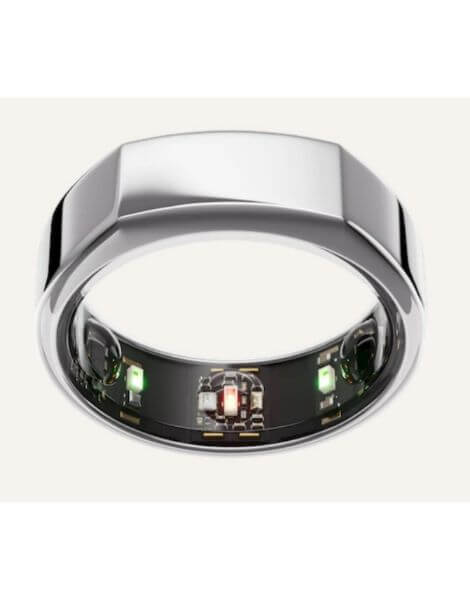
Product Highlights
- Measures your heart rate, oxygen saturation levels, and skin temperature
- Over time, it can track your sleep patterns and suggest improvements
- Battery lasts 7 days and can fully charge in 20 minutes
- Can help you find your balance between activity and recovery
- Water resistant up to 100 m
Pros & Cons
Pros
- Long battery life
- Fast charging
- No membership required
Cons
- May develop scratches with daily wear
- Limited statistics without membership
- Comparably expensive
Bottom Line
If you are looking for a fitness tracker that is more subtle and sleek than a traditional wrist tracker, the Oura Ring is a great alternative option.
If you’re looking for something that’s more fitness-oriented and don’t care about receiving text notifications, the Oura Ring is a simple yet effective fitness tracker that, you guessed it, is worn on your ring finger as opposed to your wrist.
RELATED: Oura Ring vs Apple Watch
It works with traditional ring sizes and can be worn on any finger. Oura will send a sizing kit to you if you don’t know your size.
“I love the convenience of it and how comfortable it feels, even when I’m sleeping,” says Morgan, a former NCAA Division 1 swimmer and partner of GGR performance editor Anthony O’Reilly. Coop Mitchell, founder of GGR and a fitness tech aficionado, says in our Oura Ring review that he frequently forgets that it’s on. For those reasons, we rated the ergonomics and comfort a 5 out of 5.
The only time we’d recommend taking it off is during weightlifting sessions. “It’s uncomfortable when used in that environment,” Coop says.
The Oura app provides you with two scores every day: A Readiness Score and an Activity Score. Your Readiness Score is how ready your body is to do physical labor, like cardio, based on your sleep, heart rate, and other metrics like body temperature and gives you a number between 1 and 100.
- 85 or higher: Go train!
- 70-84: You can hit the gym, just take it easy today.
- Under 70: You’re not ready to train. Focus on recovery.
Your Activity Score works the same way, but measures how well you’re balancing recovery and training.
- 85 or higher: Balance achieved.
- 70-84: Your balance is good, but can be better.
- Under 70: You’re off balance.
RELATED: Best Fitness Tracker Rings
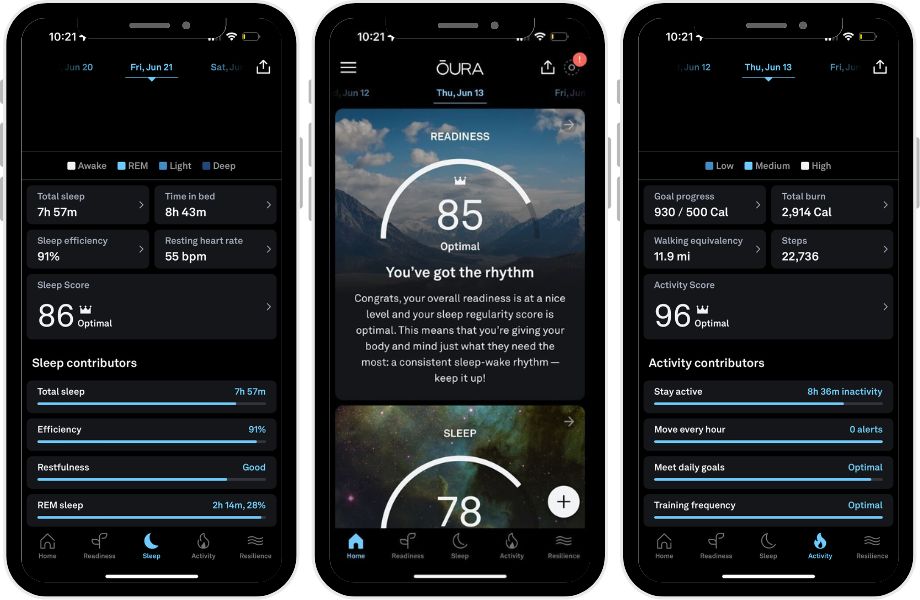
The week-long battery life is top of the line, enough to earn another 5 out of 5 on durability, and it has a high water resistance rating that allows it to be submerged in up to 330 feet of water for 12 hours, making it one of the best waterproof fitness trackers. This was one of the key reasons Morgan opted for Oura over a more traditional tracker.
The Oura Ring is capable of tracking your heart rate, blood oxygen, overall sleep habits, and breathing regularity. There’s also a cycle tracking capability, though we haven’t tested that feature.
When it comes to value, we scored it 3.5 out of 5. The ring itself costs around $300, about the same as an Apple Watch, and it requires a $5.99 monthly subscription to access your metrics.
RELATED: Oura Ring Discount
| Size | Width: 7.9mm, Thickness: 2.55mm |
| Weight | Depends on ring size |
| Display | None |
| Battery life | Up to 7 days |
| Connectivity | Bluetooth |
| GPS? | No |
| Sleep tracking? | Yes |
| Heart rate monitoring? | Yes |
| Water resistance | 10 ATM (up to 100 meters) |
| Compatibility | Android, iOS |
Best Fitness Tracker for Everyday Use: FitBit Charge 6
Good for: Everyday people looking to track their steps and other health metrics
Best for Everyday Use
Fitbit Charge 6
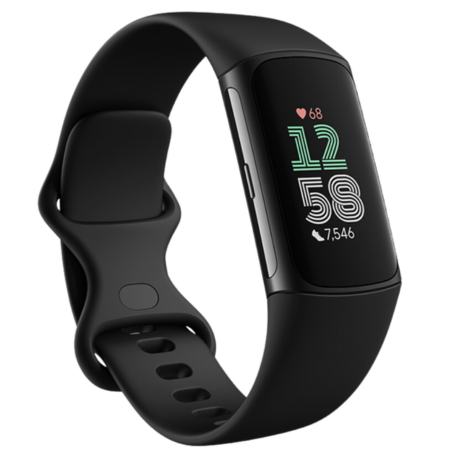
Product Highlights
- Fitbit’s No. 1 fitness tracker
- Built-in GPS
- Tracks exercise, sleep, stress, and heart rate
- 7-day battery life
- 3 colors available
Pros & Cons
Pros
- Built-in GPS for phone free workouts
- Features ECG app
- Tracks sleep
- 7 day battery life
- Heart rate appears on connected exercise equipment
Cons
- Google account required
- Reviews said watch disconnects sporadically
- Full functionality requires Fitbit premium
- Customer reviews frustrated with customer support
- Music controls only work with Youtube Music app
Bottom Line
The Fitbit Charge 6 is the newest version of Fitbit’s Charge series. It is an affordable fitness tracker with a lot of functionality like exercise, heart rate, and sleep tracking. It will work best if you are in the Google/Android ecosystem. Access to some data requires a Fitbit premium subscription. Customers generally liked the affordable watch, however, if they encountered an issue they were frustrated with the customer support.
The best Fitbit devices are well-known and respected within the fitness tracker industry. Longtime fitness writer Frieda Johnson, a certified nutrition coach, was impressed by the overall value, especially since it costs under $200.
“I really like this Fitbit and I definitely plan to keep using it,” she says. One of the newest features is automatic exercise recognition, which automatically determines what type of physical activity you’re doing and starts recording your metrics that can be viewed in the FitBit app. It’s not always perfect, however, as Frieda notes.
“It thought I was dirt biking when I was actually driving a truck down a dirt road, but I can’t really hold that against it,” she says.
Other than that, it comes with all the capabilities that have made FitBit synonymous with fitness trackers. “I love that I can check my notifications, set a timer, and track a workout without having to pull out my phone,” she says, rating the tech capabilities a 5 out of 5. “I also love the Smart Wake option. It works better for me than any alarm I’ve ever tried.”
Although the design of this fitness tracker is sleek and minimalistic, it can be hard for some people to read alerts. Frieda scored the aesthetics a 4 out of 5. “I wish it came in more colors, but I like the coral/champagne color I got,” she says.
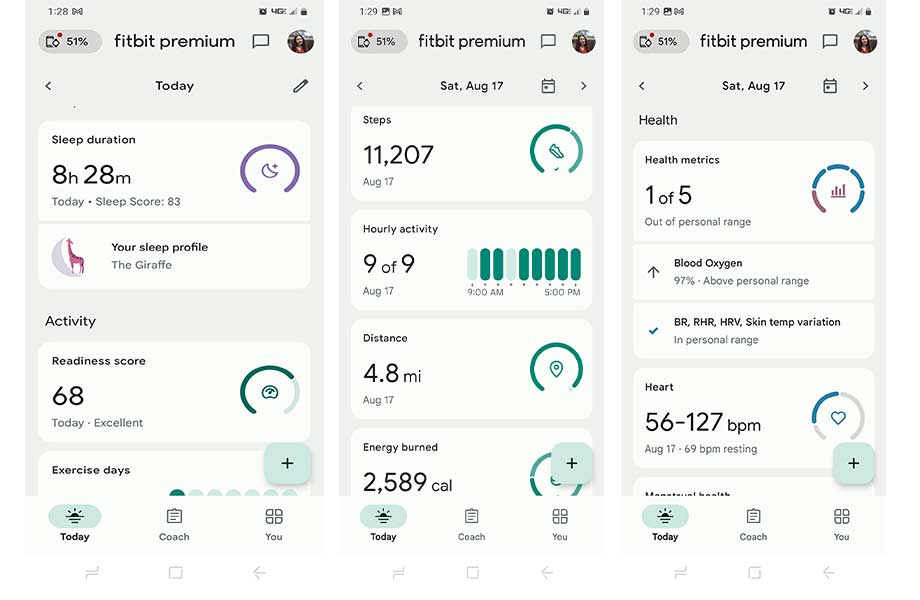
The FitBit app has a dizzying amount of health and fitness stats that can be overwhelming and difficult to manage at first. Some features can only be accessed by FitBit Premium members, such as the Daily Readiness Score that lets you know if your body can withstand strenuous physical activity.
“It takes your recent activity levels, sleep, and heart rate variability into account to give you an idea of how ready you are to perform that day,” Frieda explains. “If your score is low, then they recommend resting and limiting your activity.”
It has a seven-day battery life and is water resistant up to 50 meters, enough to earn it a 4 out of 5 on our durability scale.
| Size | 1.45″ L x 0.91″ W x 0.44″ H |
| Weight | Not disclosed |
| Display | Color touchscreen |
| Battery life | Up to 7 days |
| Connectivity | Bluetooth |
| GPS? | Yes |
| Sleep tracking? | Yes |
| Heart rate monitoring? | Yes |
| Water resistance | 5 ATM (up to 50 meters) |
| Compatibility | Android, iOS |
Best Fitness Tracker for Sleep: Whoop 4.0
Good for: Athletes or those looking to get the perfect night’s sleep for optimal recovery
Best for Sleep
Whoop 4.0
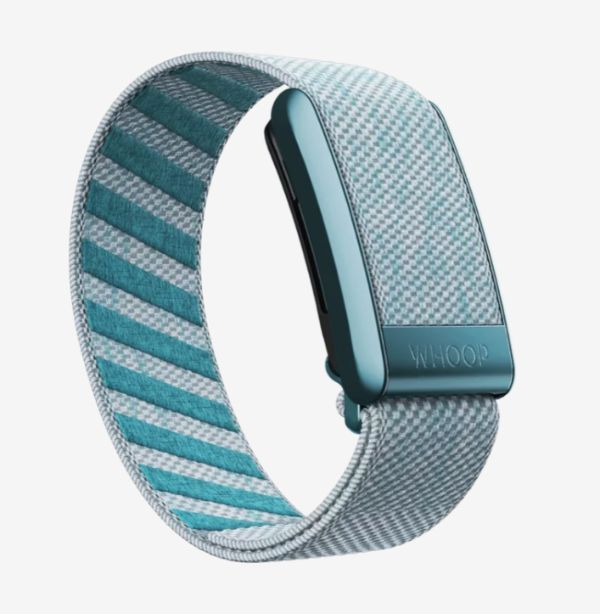
Product Highlights
- Fitness tracker without display
- Whoop app delivers data
- Tracks blood oxygen, skin temperature, and heart rate
- Also tracks sleep metrics
Pros & Cons
Pros
- 24/7 physiological data available
- Offers more in-depth metrics than most other fitness trackers
- Comes with a “coaching” feature to tell you when to train and when to rest
- Comfortable to wear
- App is user-friendly
Cons
- Monthly membership fee required
- No step counter
- No watch face or display
Bottom Line
If you’re someone who takes their training seriously, the Whoop 4.0 could be an effective tool for you to use.
The Whoop 4.0 is one of our favorite fitness trackers because it measures sleep, recovery, and overall strain. This fitness tracker is best for the serious athlete who wants a deep dive into the data that will help them train optimally.
Design-wise, the Whoop 4.0 is minimalist with just a strap, similar to the Beast Sensor. Personally, we wish there was a screen or face rather than just a band. The compatible Whoop app shows a variety of data including heart rate variability, resting heart rate, and circadian rhythm.
The strap has 24/7 heart rate, blood oxygen, and temperature monitoring, which has been upgraded from the Whoop 3.0 technology. This can help you optimize training based on how recovered you are. For example, the app will let you know if you’re good to train or if you need to take a rest day based on the amount of strain your body is under.
Although the Whoop 4.0 technically doesn’t cost any money, you must purchase a membership for a minimum of six months, which comes to $180. Custom bands start at $64—more expensive than the Whoop 3.0—and go up from there. You are unable to use the band without having a membership.
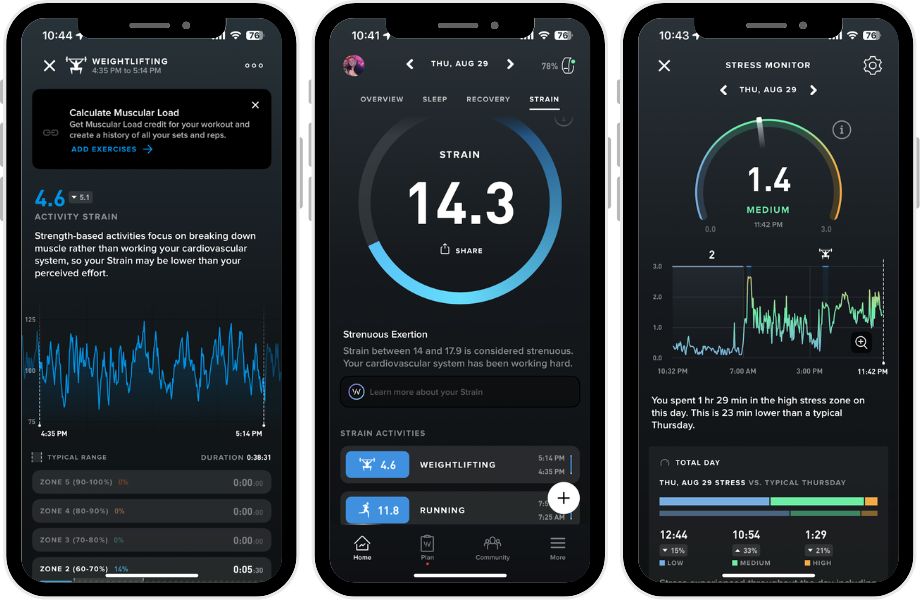
Not only does the Whoop 4.0 measure your daily effort, but it also gives a monthly performance assessment, which is chock-full of useful data and insight. Although we don’t love the idea of constantly wearing a fitness tracker, it’s useful because the strap gives in-depth information about your sleep. The length, quality of sleep, and how much sleep you need to perform optimally the next day are all broken down in the app. Another update on the Whoop 4.0 is a haptic alarm, that vibrates to wake you up at the optimal time based on your individual sleep cycle.
With a full charge, the Whoop 4.0 can last five days. Even better, the battery pack slides on for on-the-go charging so you can continue to monitor your stats.Read our Whoop 4.0 review to see our full thoughts.
RELATED: Whoop Vs Oura
| Size | 1.7” L x 1.1” W x 0.4” H |
| Weight | Not disclosed |
| Display | None |
| Battery life | 4-5 days |
| Connectivity | Bluetooth |
| GPS? | No |
| Sleep tracking? | Yes |
| Heart rate monitoring? | Yes |
| Water resistance | 10 m for 2 hours |
| Compatibility | Android, iOS |
Best Fitness Tracker With Heart Rate Monitor: FitBit Inspire 3
Good for: Those who haven’t used fitness trackers and want something simple to start with
Best With Heart Rate Monitor
Fitbit Inspire 3
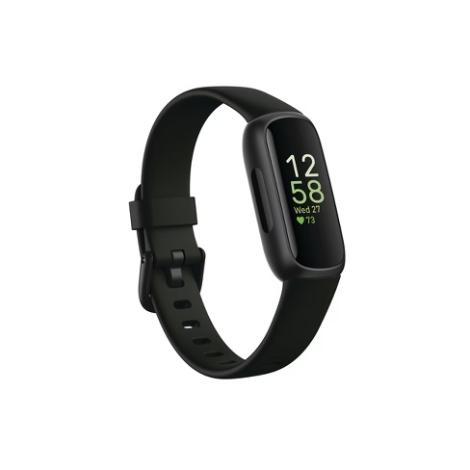
Product Highlights
- Affordable fitness tracker
- 3 colorways
- Additional bands available for purchase
- Up to 10 days battery life
- Water resistant up to 50 m
- Tracks heart rate, steps, blood oxygen, and more
- Provides sleep and stress scores
Pros & Cons
Pros
- Under $100
- 10 days of battery life
- Water resistant
- Color touchscreen
- Multiple colorways
Cons
- Small screen
- Needs to be connected to your phone for GPS
- Syncing to phone requires internet connection
Bottom Line
The Fitbit Inspire 3 is an affordable fitness tracker that still tracks a variety of activities and metrics—although the data is more basic than some more robust trackers. The Inspire 3 improves upon the design and aesthetic of the Inspire 2 with a streamlined look and color touchscreen. Additionally, it’s added a blood oxygen measurement feature, something that the Inspire line didn’t have up to this point.
Let’s face it, fitness trackers can often be intimidating if you haven’t spent much time around them. For newbies, the FitBit Inspire 3 offers intuitive and easy-to-navigate controls at a price point we can’t argue with.
RELATED: The Best FitBit Promo Codes
“This does a lot,” says Nicole Davis, a certified personal trainer and GGR’s head of content. “It would be great for beginners but offers data even data nerds would love.”
For under $100, you get the following tracking capabilities: Heart rate, blood oxygen, breathing rate, stress management score, sleep score, steps and exercise tracking, connected GPS, and call/text/app notifications. “Basically everything my other FitBit trackers can do in a smaller package,” Nicole says. “Also, it has more capabilities than some other FitBits, like the Inspire 2, which I like.”
We rated the tech capabilities a 4.5 out of 5 and the overall value a 5 out of 5. One note on the connected GPS: You’ll need a smartphone app if you want to track your runs or rides.
Nicole is used to square-style watches but says she’s a fan of the Inspire 3’s slimmer design and rated the aesthetics a 4.5 out of 5. “I tried the Morning Glow/Black colorway and I think it looks sporty and more interesting than the all-black,” she says. “Another upgrade in the Inspire 3 is the color screen—the Inspire 2 only offered white text, and I like the color.”
You’ll get a 10-day battery life, notifications of any irregular heart rhythms, and movement reminders. Nicole also notes it feels more secure during strength training workouts. “I scratched the face of my Sense 2 doing kettlebell workouts and I don’t have this issue with the Inspire band,” she says.
| Size | 1.55″ L x 0.73″ W x 0.46″ H |
| Weight | Not disclosed |
| Display | Color touchscreen |
| Battery life | Up to 10 days |
| Connectivity | Bluetooth |
| GPS? | Connected GPS via smartphone app |
| Sleep tracking? | Yes |
| Heart rate monitoring? | Yes |
| Water resistance | 5 ATM (up to 50 meters) |
| Compatibility | Android, iOS |
Most Stylish Fitness Tracker: Ultrahuman Ring Air
Good for: Those who something that will complement their wardrobe
Most Stylish
Ultrahuman Ring AIR
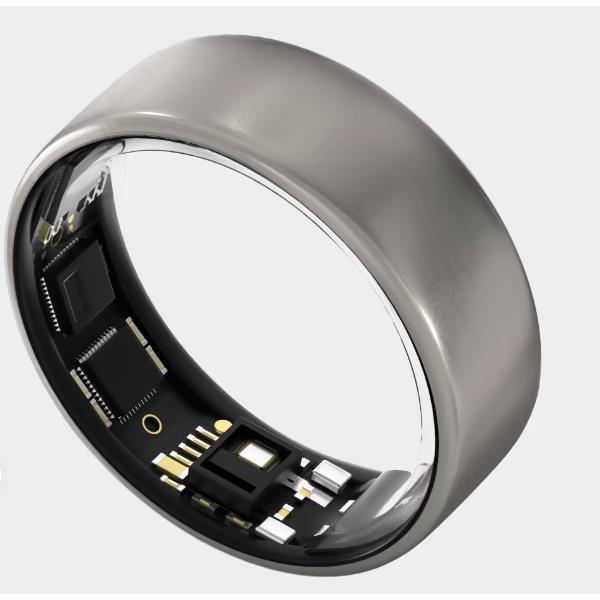
Product Highlights
- Ring fitness tracker to help you improve your sleep
- Features continuous heart rate variability (HRV) monitoring and temperature monitoring, and period heart rate monitoring
- Included: Ring AIR, standard ring charger, type-C to C cable
- 5 colors available
Pros & Cons
Pros
- Ultrahuman will send free sizing kit
- Provides a nightly sleep score and daily recovery score
- Sleep tracking with 10+ metrics
- No subscription required
- Can trade in a competitor’s ring for a discounted Ultrahuman ring
Cons
- Expensive
- Only 1 year warranty
- Customer reviews noted issues connecting with app
- Ultrahuman ring sizes different than traditional rings
Bottom Line
The Ultrahuman Ring AIR is a ring-style fitness tracker that does not require a subscription. When ordering you will have to request an Ultrahuman ring sizing kit, because the ring sizes are different from traditional rings. Customer reviews were generally positive and loved not having to pay for a subscription. Some customers did have issues with connecting the ring to the app.
If you’re looking for something that will complement your wardrobe and not clash with it, the Ultrahuman Ring Air is your best choice. Seriously, these things look nice enough to be a wedding ring and come in five stylish colors: raw titanium, aster black, matte grey, bionic gold, and space silver.
It’s on the expensive side, though Ultrahuman allows you to trade in one of their older models or an Oura ring to shave some bucks off the final price. There’s also no monthly subscription required to access your data, as you see with some other trackers.
It has many of the same tracking capabilities as other fitness rings, recording your sleep habits (down to the number of tosses and turns you do in a single night), skin temperature, heart rate, and your total steps and caloric burn.
“Sometimes I have trouble sleeping, and this helps me identify my problem points,” our expert product tester says in our Ultrahuman ring review. “It also guides me on when I should fall asleep and wake up. I check this religiously every morning.”
It only takes 90 minutes to fully charge, which can last for up to 6 days, and can be worn in up to 100 meters of water for up to 12 hours.
| Size | Width: 8.1mm, Thickness: 2.45 – 2.8 mm |
| Weight | Varies by ring size |
| Display | None |
| Battery life | Up to 6 days |
| Connectivity | Bluetooth |
| GPS? | No |
| Sleep tracking? | Yes |
| Heart rate monitoring? | Yes |
| Water resistance | 10 ATM (up to 100 meters) |
| Compatibility | Android, iOS |
Best Fitness Tracker Watch: Withings ScanWatch Light
Good for: Anyone who’s looking for fitness technology that looks like a traditional watch
Best Watch
Withings ScanWatch Light
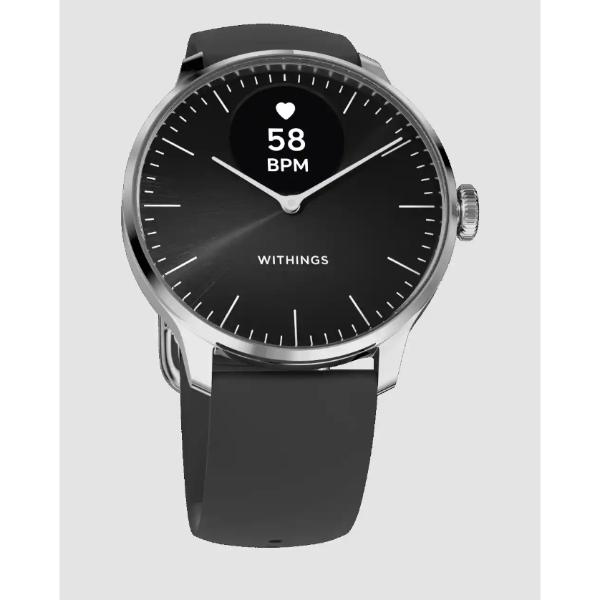
Product Highlights
- Analog-style watch
- Small display in the middle of the face watch
- Syncs with Withings app to display health metrics
- 30-day battery life
Pros & Cons
Pros
- Analog-style watch looks classier than most fitness watches
- Several health tracking capabilities, including period tracking
- Syncs with Apple Health and GoogleFit
- Water- and scratch-resistant
- FSA- and HSA-eligible
Cons
- Expensive
- Smaller display on the face watch
Bottom Line
The Withings ScanWatch Light is an analog-style fitness watch that looks like your traditional timepiece, with the added benefit of a small display in the center of the face watch that can be used to receive alerts and track your workouts. You can also get metrics on your heart rate, sleep, step count, and more via the Withings app. "I just love the look of this thing," says tester Anthony O'Reilly.
The Withings ScanWatch Light is a hybrid smartwatch that looks like your traditional timepiece, except it comes with tech capabilities not found on any Pateks or Rolexes. Anthony O’Reilly, who frequently uses analog watches, is frankly obsessed with the all-black version he picked out.
RELATED: Fitness Tracker vs Smartwatch
“These are very stylish watches you could wear to a formal occasion while still tracking everything you want,” he says. “You can’t really tell it’s a fitness tracker unless you’re looking at it up close. Very striking colors with customizable bands available.” He wanted to give the appearance a 10, but our scoring only goes up to a 5 out of 5.
Unlike Apple Watches or Garmins, the ScanWatch only has a small window in the center of the clockface where you can toggle between activity trackers and other features like a stopwatch, alarms, and more by using the crown. “It kind of looks like a ticker you’d see at the bottom of cable news channels,” Anthony says. “My one complaint is that at certain times the minute and hour hands have to move to a different position so you can see the ‘screen.’ This is only for the few seconds you’re setting the watch to track workouts or reading a text message.”
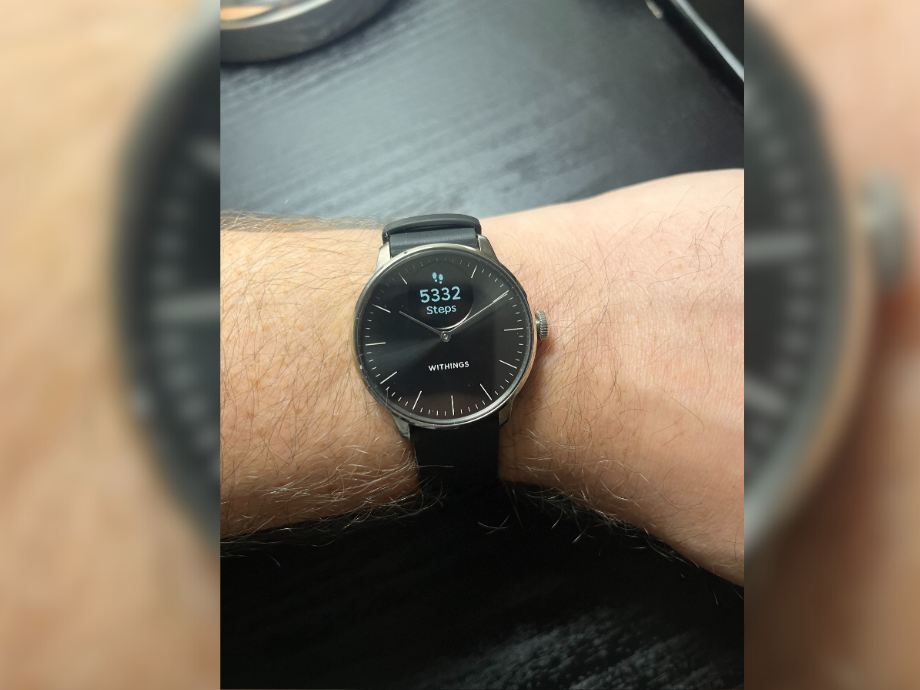
Once synced with the Withings app, the watch displays your daily steps, heart rate, and other metrics. You need to upgrade to Withings+ to get certain data, like sleep score and cycle tracking, so we rated the tech capabilities a 4 out of 5.
“Another reason I docked a point is you can’t do two functions at once,” Anthony explains in his Withings Scanwatch review. “For example, I sometimes use it as a timer during my rest periods, but I’m unable to exit that functionality and use the watch for something else.”
This will hold up fine during your next stairmaster workout, but if you’re doing CrossFit metcons or powerlifting you should know Anthony recommends keeping this in the locker room and using a different tracker. “This band isn’t really meant to withstand harder workouts,” he says.
Other than that, it scores a 5 out of 5 on durability for its 30-day battery life and use of Gorilla glass that prevents scratches or cracks on the watch face. “I still wouldn’t use this during kettlebell workouts,” Anthony says, “but after researching the materials they use, I’m confident my investment will last quite a while.”
| Size | 37 mm |
| Weight | 27.1 g (without wristband) |
| Display | Grayscale OLED display |
| Battery life | Up to 30 days |
| Connectivity | Bluetooth |
| GPS? | Yes |
| Sleep tracking? | Yes |
| Heart rate monitoring? | Yes |
| Water resistance | 5 ATM (up to 50 meters) |
| Compatibility | Android, iOS |
Best Fitness Tracker for Running: Garmin US Forerunner 265
Good for: Cardio fanatics and people marathon training
Best for Running
Garmin Forerunner 265
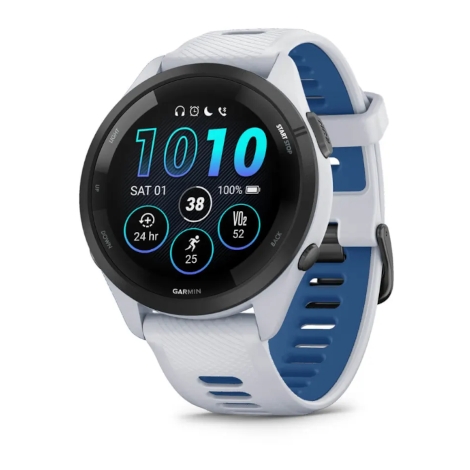
Product Highlights
- Fitness tracking watch designed for runners
- Up to 15 days of battery in smartwatch mode
- Comes in 2 sizes
- Tracks heart rate, sleep, stress levels, hydration, and more
- Morning report feature presents readiness levels
Pros & Cons
Pros
- Long battery life
- Multiple sizes
- Available in 6 colors
- Morning report feature presents readiness levels
Cons
- Pricier fitness tracker
- No wireless charging option
Bottom Line
The Forerunner 265 is one of Garmin’s latest fitness trackers for runners, available in six colors and two different sizes. It has a few more features than the Forerunner 165, but not as many as the 965, which gives it a middle-of-the-road price. Along with heart rate monitoring and sleep insights, the morning report presents readiness levels, each day.
We’ve recommended the Garmin Forerunner series to runners for a few years, and the Garmin US Forerunner 265 helps keep that streak alive thanks to its durable build, versatile functions, and GPS capabilities.
Morning runners will love the Morning Report function, which gives you a quick look at your heart rate variability and local weather so you can customize your daily block as needed. You can also build customized training plans based on any upcoming races and receive alerts during your run about your heart rate and other health metrics.
“I bet neither me nor my husband would use all the features,” says Lauren Strong, GGR senior staff writer and a certified personal trainer. “It synced to his phone super easily. My husband uses it for steps, heart rate monitoring, sleep tracking, stress level tracking, and blood oxygen levels. He has used the GPS feature, but he’s not much of a runner so our walks end up being one of three neighborhood routes.”
Lauren calls this a “rugged watch” that can withstand regular use, scoring the durability a 5 out of 5. “My husband is super hard on his stuff and it still looks brand new after 8ish weeks,” she says. “The battery lasts at least 15 days, but I think maybe more if you don’t want to wear it while sleeping.”
One area they struggled with was adjustability, which landed at a 3.5 out of 5. “The band itself has quite a few adjustments but my husband’s is on the last few holes,” Lauren says. “It’s a bit small and I wish it came with an optional longer band.”
You can learn more from our in-depth Garmin Forerunner 265 review.
| Size | 42 mm: Fits wrists up with a circumference of 115-178 mm 46mm: Fits wrists up with a circumference of 135-205 mm |
| Weight | 47 g |
| Display | AMOLED touchscreen with 1.3″ diameter |
| Battery life | Smartwatch mode: Up to 13 days GPS-Only GNSS mode: Up to 20 hours SatIQ (AutoSelect) GNSS mode: Up to 16 hours All-Systems GNSS mode + Multi-Band: Up to 14 hours GPS-Only GNSS mode with music: Up to 7 hours SatIQ (AutoSelect) GNSS mode with music: Up to 6.5 hours All-Systems GNSS mode + Multi-Band with music: Up to 6 hours |
| Connectivity | Bluetooth, ANT+, Wi-Fi |
| GPS? | Yes |
| Sleep tracking? | Yes |
| Heart rate monitoring? | Yes |
| Water resistance | 5 ATM (up to 50 meters) |
| Compatibility | Android, iOS |
Best Budget Fitness Tracker: Xiaomi Mi Smart Band 7
Good for: Those looking to spend under $60 but still want a reliable smartwatch
Best Budget
Xiaomi Mi Smart Band 7
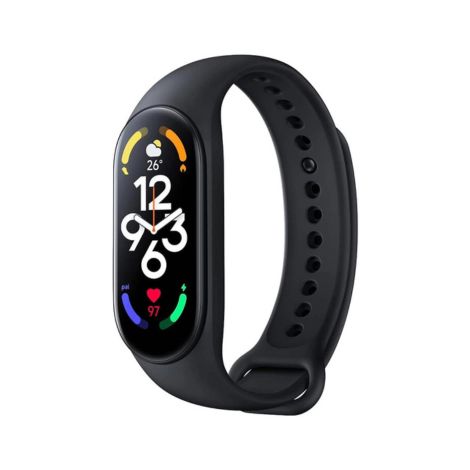
Product Highlights
- Fitness tracker band
- Tracks heart rate, SpO2, sleep, and menstrual health
- Over 110 workout modes
- Water resistant to 50 m
Pros & Cons
Pros
- Budget-friendly
- 110+ workout profiles
- Color touchscreen
- Water resistant to 50 m
- Long battery life
Cons
- Website and customer service is difficult to navigate
- Metrics aren't as accurate as other competitors
Bottom Line
The Xiaomi Mi Smart Band 7 is a fitness tracker that boasts over 110 workout modes. This fitness tracker tracks basic metrics, and at a competitive price of under $50. While the tracker isn't as accurate as other trackers (according to customer reviews), this is a solid option for beginners new to tracking their fitness.
We’re typically suspicious of fitness technology under $60, just because you generally get what you pay for. That cliche, however, doesn’t apply to the Xiaomi Mi Smart Band 7, an affordable fitness tracker that performs as well as those four times its price. While we haven’t handled the Smart Band 7, we did test out the previous generation and were impressed with its capabilities at a low price.
We gave the Smart Band 6 a 4.5 on tech capabilities because it has everything from phone alerts to women’s health and stress monitoring. It had a 14-day battery life, was fully charged in an hour, and tracked more than 30 types of exercises; the Smart Band 7 improves on this with over 110 workout modes.
Our only major complaint with it was with the looks and feel of the Mi Smart Band. We rated the aesthetics a 3.5 out of 5. “I don’t hate how it looks but it isn’t exactly the prettiest fitness tracker I’ve ever seen,” says former collegiate and semi-professional soccer player Caroline Lubinsky. She also said the watch caused her to feel itchy after extended use.
“I’m not sure why it feels like that as I wear a rubber Apple Watch band all the time,” Caroline says.
Caroline gives her full thoughts on the previous generation of the budget-friendly fitness tracker in our Xiaomi Mi Smart Band 6 review.
| Size | 46.5 mm L x 20.7 mm W x 12.25 mm H |
| Weight | 13.5 g |
| Display | 1.62″ AMOLED touchscreen |
| Battery life | Up to 14 days |
| Connectivity | Bluetooth |
| GPS? | Yes, with smartphone app |
| Sleep tracking? | Yes |
| Heart rate monitoring? | Yes |
| Water resistance | 5 ATM (up to 50 meters) |
| Compatibility | Android, iOS |
Best Battery Life Fitness Tracker: Garmin Fenix 7x Sapphire
Good for: Those who want something that can be worn for a few days before being recharged
Best Battery Life
Garmin Fenix 7X Sapphire Solar
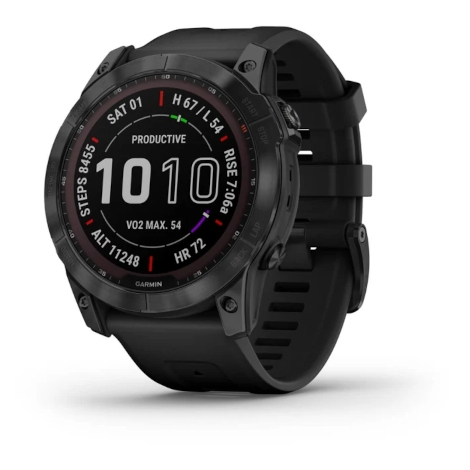
Product Highlights
- Fitness tracker designed for outdoor activities and sports
- Solar charging can increase battery life up to 37 days
- Multi-band GPS
- Provides wellness tracking and suggested workouts
Pros & Cons
Pros
- Tracks for many outdoor sports
- Multiple colors and sizes available
- Water resistant up to 100 m
- GPS tracking
Cons
- Expensive
- Somewhat bulky appearance
Bottom Line
The Garmin Fenix 7X Sapphire Solar is a rugged smartwatch that can track a variety of outdoor sports, including golf, swimming, and horseback riding. The watch boasts a 28-day battery life that can boost up to 37 days with solar charging. It’s a pricey smartwatch, but it’s also durable, with water resistance that can withstand pressures up to 100 meters.
The Garmin Fenix 7x Sapphire can last for up to 28 days, 37 if you get the solar-powered version, so you won’t have to take it off and charge it every night. Most of the fitness trackers we researched lasted about a week to 10 days, depending on usage, so this Garmin smartwatch is definitely at the top end of battery life.
Nicole Davis, a certified personal trainer and GGR head of content, says her husband uses it every day, and she’s surprised it’s lasted him more than three years. “He’s notoriously hard on his clothes, shoes, watches—everything really—so this is a huge testament to this watch’s durability,” she says, rating it a 5 out of 5 on durability. “The screen is indeed scratch-resistant.”
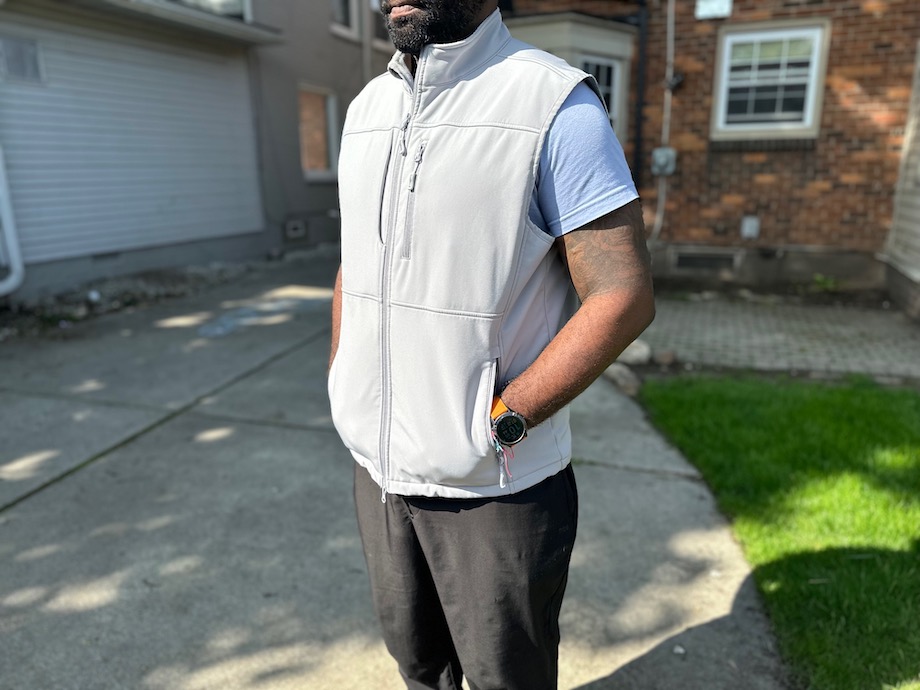
It also received a perfect score for tech capabilities for its 24/7 health and wellness monitoring, stamina tracking, sleep tracking, GPS, and Spotify, just to name a few. “It’s pretty wild,” Nicole says. It stays wild, with replaceable bands (Nicole brought several to switch up the look) and access to Garmin Connect to participate in online fitness competitions.
There are several versions of this watch, and as we mentioned before you can even get a solar-powered version that helps extend the battery life. Many versions offer a Readiness Score that lets you know how tired your body is, based on sleep and other metrics, and whether you’re OK to train or if you should take a rest day.
“This was 100% worth the investment,” Nicole says of the watch that can cost up to $900. “I’ll buy another one if I ever need to, but anticipate this watch lasting a long time.”
RELATED: Garmin Discount Code
| Size | 51 mm L x 51 mm W x 14.9 mm H |
| Weight | 89 g |
| Display | Sunlight-visible, transflective memory-in-pixel (MIP) with 1.4″ diameter |
| Battery life | Up to 28 days, 37 days with solar |
| Connectivity | Bluetooth, ANT+, Wi-Fi |
| GPS? | Yes |
| Sleep tracking? | Yes |
| Heart rate monitoring? | Yes |
| Water resistance | 10 ATM (up to 100 meters) |
| Compatibility | Android, iOS |
*Based on 51mm Sapphire Solar version. Battery life and other specs might change depending on which version you select
Best Fitness Tracker for Android: Samsung Galaxy Watch5
Good for: Anyone with an Android phone
Best for Android
Samsung Galaxy Watch5
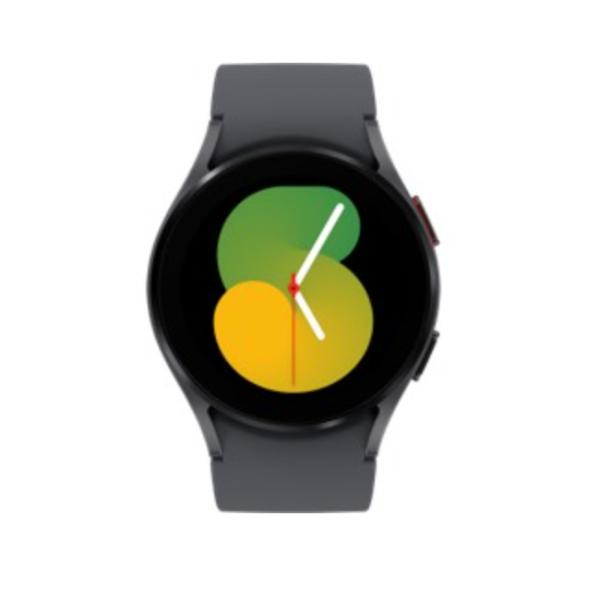
Product Highlights
- Fitness watch for Android phones
- “Advanced Sleep Coaching” capabilities
- Claims their curved sensor provides a more accurate reading because it’s closer to the skin
- Up to 50 hours of battery life
- Customizable face watches and bands
Pros & Cons
Pros
- Built to work with Android phones
- Highly customizable
- Auto workout tracking
- Two size options
- Only takes 30 minutes to achieve 45 percent charge
Cons
- Expensive
- Water resistant only up to 5 feet
Bottom Line
The Samsung Galaxy Watch5 is the watch of choice for Android users looking for a smartwatch that syncs well with their phones.
The Samsung Galaxy Watch is essentially the Android version of the Apple Watch—a smaller smartphone that also serves as a watch and fitness tracker. In our opinion, the Samsung Galaxy Watch5 is the best bang for your buck for Android users (and yes, we’ll discuss why we like it over the Watch6 and Watch7).
On the Watch5, you get Advanced Sleep Coaching, a curved sensor for more accurate readings of key health metrics, and Auto Workout Tracking that recognizes which sport you’re doing so it can record your metrics (time, caloric burn, etc.). ,
We like it more than the Galaxy Watch6 because that version seems to be more concerned about smartphone capabilities, though the 40-hour battery life is much longer than the 24 to 48 hours you get on the Watch5. The GalaxyWatch 7 looks cool, but because it uses artificial intelligence (AI) to track many of the metrics, we’d like to test it to gauge its accuracy before giving it our full-fledged endorsement. Check out our Samsung Galaxy Ring Review to learn more about another Samsung fitness tracker as well.
| Size | 44.4 mm L x 43.3 mm W x 9.8 mm H |
| Weight | 33.5 g (without wristband) |
| Display | 1.4″ diameter, color touchscreen |
| Battery life | 24-48 hours, depending on usage |
| Connectivity | Bluetooth |
| GPS? | Yes |
| Sleep tracking? | Yes |
| Heart rate monitoring? | Yes |
| Water resistance | 5 ATM (up to 50 meters) |
| Compatibility | Compatible with certain Android and iOS phones |
Best Fitness Tracker for iPhone Users: Apple Watch Series 9
Good for: Anyone with an iPhone or in the Apple ecosystem
Best for iPhone
Apple Watch Series 9
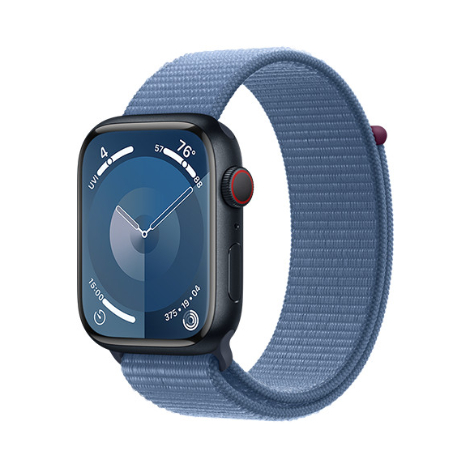
Product Highlights
- Pricing starts at $399
- 18-hour battery life
- Seamless integration with other Apple devices
- Tracks heart rate and steps
- Can track body temperature and energy expenditure
- Optional data plan available
- Added data unlocks calls and texts without your phone
Pros & Cons
Pros
- Tracks heart rate, body temperature, ECG readings, and more
- Stream music, calls, and texts with a data plan
- Works seamlessly with other Apple products
Cons
- Battery only lasts up to 18 hours
- Sensors don't work well with tattooed skin
- Not much different from previous models
Bottom Line
The Apple Watch Series 9 is a fantastic smart watch with integrated health and fitness tracking, especially for those who use other Apple products. The battery isn't very long, and the design hasn't changed much over the years, but this is a great choice for those who want a smartwatch that functions like a small iPhone.
The Apple Watch Series 9 is the latest version of the classic smartwatch and fitness tracker, and in our opinion it’s their best one yet. “If you’re in the Apple ecosystem and use an iPhone, I truly believe it’s well worth it,” says fitness coach Matt Dustin, who scored it a 5 out of 5 on value.
RELATED: Best Apple Watch
Matt also gave it a perfect score for tech capabilities, adjustability, and community engagement. “There’s no shortage of apps you can download and install on the watch,” he says. “It’s truly a small iPhone minus the camera features. You can track nearly anything.”
“One big feature of Apple is you have countless band options to choose from, and most are adjustable,” Matt says of the band.
It’s not the most durable watch, as anyone who’s worn it while doing kettlebell snatches will tell you. “I use a screen protector, but it seems a little fragile,” Matt says. “It has a few dings from clanging against stuff in the gym.” We scored it a 4 out of 5 on durability.
Matt notes that, as with other fitness trackers, people with dark tattoos, like himself, might not get the most accurate readings. “I turn off wrist detection which disables Apple pay,” he says. “I can still track my steps, workouts, control music, and get notifications, all fine with me, but I do lose some features. One feature they really push is the fall/crash detection that automatically calls for help if you get hurt, but that doesn’t when wrist detection is turned off.”
For those with an older Apple Watch, the biggest differences between the Apple Watch 8 and Apple Watch 9 are the newer one has better Siri capabilities, more memory, and a double-tap gesture that activates the control of your choice, whether that’s to use Apple Pay or hit play on your tunes.
| Size | 45 mm L x 38 mm W x 10.7 mm D |
| Weight | 51.5 g |
| Display | Always‑on retina LTPO OLED display |
| Battery life | Up to 18 hours, 36 hours in Low Power Mode |
| Connectivity | Bluetooth and WiFi |
| GPS? | Yes |
| Sleep tracking? | Yes |
| Heart rate monitoring? | Yes |
| Water resistance | 5 ATM (up to 50 meters) |
| Compatibility | Compatible with certain Android and iOS phones |
Best Garmin Fitness Tracker: Garmin Forerunner 965
Good for: Garmin enthusiasts or those looking for a stylish, durable fitness tracker
Best Garmin
Garmin Forerunner 965
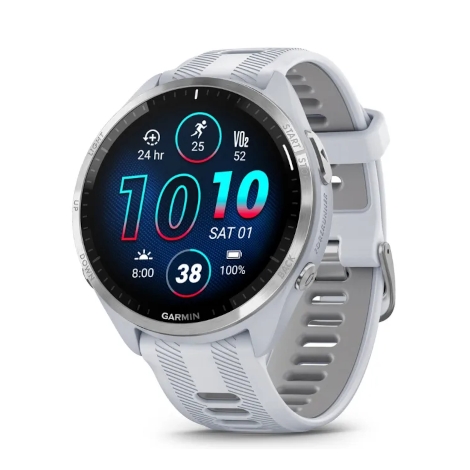
Product Highlights
- Garmin running watch
- Color AMOLED display
- Features multi-band GPS and built-in maps
- Provides suggested workouts and training readiness
- Shows on-wrist running dynamics and training status
- Includes USB C cable and manual
Pros & Cons
Pros
- Available in 3 colors
- Both touchscreen and button control
- Live location tracking and incident alerts with location data
- Built-in maps and multiband maps
- Tracks sleep data and provides a readiness score in the morning
Cons
- Short 1-year warranty
- Expensive at almost $600 dollars
- No ECG heart rate tracking
- No wireless charging capabilities
- Very mixed reviews on the Garmin Connect App
Bottom Line
The Garmin Forerunner 965 is a running watch with multi-sport functionality. It features an AMOLED display, multi-band GPS, and built-in maps and tracks your activity, recovery, and sleep. Customer reviews for that watch are mostly positive. However, multiple customers dislike the Garmin Connect interface.
Garmin may be the only company that comes close to challenging Apple for the smartwatch fitness tracker crown, and in our Best Garmin Fitness Tracker roundup we named the Garmin Forerunner 965 as our top pick for people looking for an Apple Watch-like experience.
You can control tons of apps, including any music streaming service like Spotify, use GarminPay (their version of ApplePay) at stores and restaurants, and can still be used to track various workout styles. The 23-day battery life is much better than the AppleWatch, which needs to be charged every night. Garmin gets perfect scores in durability, value, and tech capabilities.
Plus, it’s pretty easy to set up and use.
“It took me a day or so to figure out what all of the buttons do and how to access the screens for starting a workout or looking up my other health stats, but now that I’m used to it, it’s not difficult at all,” says certified personal trainer and GGR senior editor Amanda Dvorak in our Garmin Forerunner 965 review.
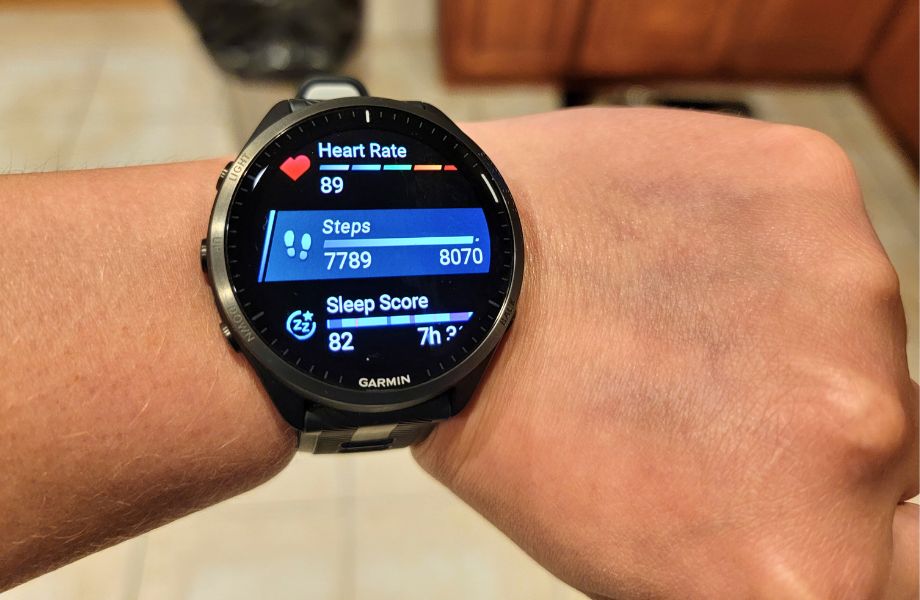
Regarding health metrics, here are some of the things you can track with your Garmin smartwatch:
- Resting heart rate
- Body battery
- Training readiness score
- Sleep insights (including a nap detector)
- Pulse ox (for measuring oxygen saturation in your blood)
- Stress levels
- Daily step count
- Daily calorie expenditure
- Vo2 max
- HRV
- Sleep tracking
- Training load
Although it has a typical analog watch design, Amanda was not too pleased with the color options. She says it looks like a “sports watch,” so it might not mesh with your date night outfit.
| Size | 47.2 mm L x 47.2 mm W x 13.2 mm D (fits wrists with a circumference of 135-205 mm) |
| Weight | 53 g |
| Display | 1.4″ (35.4 mm) diameter AMOLED screen (optional always-on mode) |
| Battery life | Up to 23 days (smartwatch mode) |
| Connectivity | Bluetooth, ANT+, WiFi |
| GPS? | Yes |
| Sleep tracking? | Yes |
| Heart rate monitoring? | Yes |
| Water resistance | 5 ATM (up to 50 meters) |
| Compatibility | Compatible with certain Android and iOS phones |
Other Fitness Trackers We Researched and Tested
Although we haven’t personally tested all of the fitness trackers available today, we did do our research; here are some other wearables that didn’t quite make the list.
Fitbit Versa 3
As one of FitBit’s more premium watches, the Versa 3 tracks activity and sleep, can sync to your phone and comes with a built-in GPS. If ECG and skin temperature tracking are important to you, skip this wearable.
Amazfit Bip U
If you’re looking for a smart watch on a budget, the Amazfit Bip U series might be one worth checking out. It tracks heart rate, blood oxygen levels, sleep quality, stress levels, breathing, women’s health, plus all your workouts. It can also sync to your phone and can last for nine days on a full charge. Complaints about it breaking after light use, as well as poor customer service to resolve any issues, are worth noting though.
Garmin vivoactive 4S
If you’re looking for a smaller GPS smartwatch for everyday living, consider the Vivoactive 4s. It features all of the tracking that you could need—heart rate, blood oxygen level, sleep, step counting, plus training, planning and workouts—in a more petite package.
Amazfit Band 5
For $40, we had to dig into the hype behind the Amazfit Band 5. This slim device not only tracks your steps, sleep, blood oxygen levels, and menstrual cycle, it can also sync with your phone to function as a smart watch. Customer complaints about the display and brightness were the biggest red flags.
How We Picked and Tested
We carefully selected the fitness trackers on this list, and evaluated each one we researched and tested based on the following criteria:
- General wear: Is it comfortable? Is it easy to take on and off? Does it stay on during exercise? Do we like the look?
- Activity tracking: Does it count steps, and accurately? Does it track your workouts? Does it log running, biking and swimming along with other forms of cardio? Does it log resistance training?
- Record workouts: Can you record a workout? Can you create progressive training plans based on your previous training?
- Heart-rate accuracy: Does it monitor heart rate? Did it seem accurate?
- Battery life: How long can I go between a charge?
- Privacy and security: Does this fitness tracker sync to my phone? Does this fitness tracker have built-in GPS? Does this fitness tracker have Bluetooth capability? Does the fitness tracker have a companion app?
- Ease of use: Is it easy to access all of the features? Is it easy to navigate? Is it easy to track and record stats?
Benefits of Using a Fitness Tracker
You may be asking, “Why the heck do I need a fitness tracker?” Well, reader, there are many reasons. Regardless of your fitness level, I believe anyone and everyone can benefit from owning one. You can learn cool stats that will improve the way you workout, sleep, recover, and track your goals.
Goal Tracking
Without a fitness tracker, you may be way over or underestimating your activity levels. It can be frustrating to not see results, but a tracker will keep you accountable for your fitness goals.
With a fitness tracker, you’ll be able to see your daily step count, active minutes, calories burned, and more. Some compatible apps will offer workout suggestions, tips for success, and plans you can use to reach your goals.
Better Recovery
With better technology, many fitness trackers can be tools for recovery and wellness. REM cycle information and general sleep tracking can help you know how to optimize your training for tomorrow. If you didn’t get good sleep the night before (sleep experts say adults need 7-9 hours), then it might be time for a rest day or a lighter workout.
For example, the Whoop Strap 4.0 will measure things like the strain currently on your body. If you did a difficult workout the day before, your body may be too fatigued or strained to perform well tomorrow. With a fitness tracker, you’ll gain valuable insight into your body’s needs from a data-driven perspective.
Community
Most fitness trackers have an app where you can connect with other users. Having a community keeps you accountable and motivated. The majority of fitness trackers have options to connect with friends, participate in challenges, and climb leadership boards. The Apple Watch Series 9 gives you the option to compete weekly with friends to see who can crush their move goals. It adds a level of fun and competition that fitness doesn’t always have.
Another great place to get plugged into the fitness world is my Home Gym Community Facebook page.
Types of Fitness Trackers
A fitness tracker is an umbrella term that covers any type of wearable device that can monitor certain bodily metrics, such as your heart rate and daily step count. There are three main types: watches, bands, and rings.
Fitness watches, such as the Apple Watch or the Garmin vivoactive 5, are worn like a standard analog watch but act as a backup smartphone. They can generally be used to make calls and send texts, and also come with many apps and health tracking abilities.
Fitness tracker bands are for people looking for a more fitness-focused device. They track and send health metrics to a connected smartphone app. Some of them come with alerts about text messages or calls, though you generally can’t use the band to respond.
Fitness tracker rings are exactly what they sound like—fitness trackers worn around your finger, instead of the wrist. You wouldn’t want to go for this if you lift weights or use your hands a lot, but they’re comfortable and our expert product testers said they sometimes forgot they were wearing them. These are only used for tracking your health metrics.
Who Are Fitness Trackers For?
Fitness trackers are for anyone who wants to closely monitor certain health metrics to optimize their health or athletic performance. They can be used for tracking your daily step count to win the office walking challenge, to monitoring your heart rate to alert you of any spikes or drops. There have been several published reports of fitness trackers alerting people of heart attacks before they recognized the symptoms.
Certain fitness trackers can also be used to monitor your oxygen levels during training, tracking your menstrual cycle, and even your skin temperature.
Fitness Tracker Uses
Fitness trackers can be used to monitor certain health metrics. Anthony O’Reilly, GGR performance editor, used them to track his daily step count in New York City, a place where more people walk as their primary mode of transportation than anywhere else in the United States, and compare his numbers against his friends (he once walked more than 25 miles in one day).
Athletes use it to track their oxygen levels during training and their quality of sleep so they can fine tune their training and diet to achieve their ideal health levels.
Here’s a few examples of how Garage Gym Reviews writers and editors use their fitness trackers during training and everyday life.
“I got hooked on fitness trackers to count my daily steps, but now I love them for so much more,” says Nicole Davis, a certified personal trainer and GGR’s head of content. “I’m a data nerd and didn’t know it, so I like to see stats on my heart rate, sleep patterns, and more.”
“Having my notifications sent straight to my wrist was awesome, I spent less time checking my phone, which is good for my mental health,” says Erin Chancer, a certified personal trainer and GGR senior editor. “I also tend to anchor myself to my desk during work days, so having the tracker tell me to get up and move or stretch was a game-changer. And it’s so satisfying when it gives you kudos for beating your step goals for the day. I think I even said, ‘Thanks, watch!’ out loud.”
“I’ve always struggled to wake up in the morning, but having my Fitbit pick a time when I’m not deeply asleep and vibrate to wake me up has been amazing,” says Frieda Johnson, a certified nutrition coach and longtime fitness writer and editor. “It works so much better than a traditional alarm clock, it’s crazy!”
“I finally took the plunge and got an Apple Watch a year ago and didn’t realize how much I had been missing out on,” says Stephen Sheehan, a former rugby player, GGR writer, and certified personal trainer. “I love being able to track my heart rate, as I usually perform HIIT circuits and want to make sure I’m staying in the right zone. I also discovered a newfound appreciation for walking and moving in general, as the step tracking and and “stand up” reminder encourage me to be active more than ever.”
Two of our testers, however, said they go through stages where they either love or hate their fitness trackers.
“There’s a fine line to walk, especially for certain personality types, with how to use a fitness tracker without overdoing it,” says weightlifting coach and GGR Senior Director of Content Kate Meier. “I mostly enjoy getting my step count. I had to ditch the Apple Watch because the ‘active calories burned’ was just a little too much for me.”
Lauren Strong, GGR senior writer and a certified personal trainer, agrees. “It’s not only data/fitness tracking to obsess over, it’s another screen to stare at and not be present,” she says. “I actually had my husband do most of the testing for the Garmin watch I ordered this quarter. After about a month he got burnt out on the data and had to tap out.”
Kate and Lauren bring up good points. Two academic editors for the International Journal of Environmental Research and Public Health1 noted in 2023 that fitness wearables, “may also lead to negative health consequence especially if tracking steps, calories, or physical activity goals becomes extreme” and said one study2 found the devices led to dangerous habits like over-exercising and purging.
“While the research on the negative impact of wearable technology is limited, these issues should be considered by healthcare providers or fitness professionals who are recommending wearable technology to their patients/clients,” the two researchers state.
What to Consider When Buying a Fitness Tracker
Buying a fitness tracker doesn’t have to be stressful. I’ve done plenty of testing and research to eliminate the hassle for you. Check out the things you should consider when purchasing the best fitness tracker watch for your needs.
Price
Cheap fitness trackers can start as low as $30 and high-end options cost upward of $600. Decide what your price range is and what fitness features you’re willing to compromise on if you spend less.
Generally speaking, you get what you pay for. If you purchase a $20 fitness tracker, you’ll likely run into issues you wouldn’t with a more expensive option. Higher-priced trackers like the Apple watch often have financing options available if you aren’t able to pay in one sitting.
Activity Tracking
With the latest technology, most fitness trackers are able to track so much more than simply running and biking. Here are a few cool things you can keep track of with a wearable:
- Swimming laps
- Cardio: rowing, elliptical, walking, hiking, dancing, HIIT
- Strength: lifting weights, core training
- Yoga, pilates, and barre
- Sleep (REM, restlessness, tracking hours)
- Menstrual Cycle
Technology
Today’s fitness trackers have plenty of options for technology. Some can connect to apps, your smartphone, or even friends. Here are some things you might want your fitness tracker to be able to do:
- Play music, audiobooks, and podcasts
- Track EKG and blood oxygen levels
- Connect to smartphone to see texts, calls, emails, and notifications
- Ability to pay virtually
- Have compatible apps to connect and compete with friends
- Give performance assessments and form suggestions
- Track route via GPS
- Sleep stats (REM, restlessness, hours slept)
- HR variability, resting HR, and circadian rhythm
Style
Some fitness trackers are discrete and sleek while others are bulkier and easy to read. Many fitness trackers have options to customize the band or even the watch face. With a variety of colors and materials to choose from, pick a few that work with your lifestyle so you can interchange them.
Display
A simple LED display, through a watch face, or only through an app are a few options you can expect to see for a fitness tracker display. Some faces are larger and easier to read while others are smaller and more difficult to see for those who are far-sighted. The Apple Watch Series 7 has a full-color display while some fitness trackers are in black and white. When going out into the sun, keep in mind that come displays may dim or brighten without you manually switching it yourself.
Lifestyle Compatibility
Some of you want a fitness tracker that will keep tabs on your marathon training, while others are just looking to stay active and get enough daily steps. Depending on your exercise preference, you’ll want to find a compatible fitness tracker. For example, if you’re a serious athlete looking to get the most out of your training, getting a data-driven fitness tracker like the Whoop 4.0 can help you achieve your goals.
Water-Resistance
If you’re interested in swim tracking, water resistance is an important factor to look at when choosing a tracker. There are seven levels of water ratings to determine what activities are okay with different fitness trackers. The lowest water-resistance level is IPX7, which means the technology can only withstand 30 minutes of mild water exposure like rain or showering.
Most fitness trackers that are water-resistant will be a 5ATM. This means the tracker can withstand 50 meters of water exposure while swimming. If you are a scuba diver or someone who goes deeper than 50 meters, you may have more difficulty finding something that has been given the highest water rating, which is “Dive tested.”
Battery
Depending on the type of activity you like to do, charging your fitness tracker every night may not be feasible for you. For example, if you enjoy hiking or camping and won’t have access to an outlet to charge your tracker, choosing a wearable with long battery life is advisable.
It is also important to keep in mind that certain features will wear down the battery on a tracker more quickly. The GPS will generally cut down battery life significantly. Luckily, some trackers have rapid-charge options that require little downtime for your wearable.
Sleep Tracking
Being able to access analysis on your sleep patterns can help your overall wellness. By logging data on how long you sleep, the quality of your sleep, and the phases of your sleep cycle, as well as other lifestyle factors like exercise and alcohol, fitness trackers with sleep tracking can help you detect patterns that you may otherwise have not discovered.
For instance, do you sleep poorly after you’ve had a few glasses of wine with dinner? Does a hard workout mean for a more restful night’s sleep? If you go to bed earlier and wake up earlier, do you have more energy throughout the day?
While this sleep data is not as accurate as a sleep study would be, it does provide a framework for you when you’re thinking about your quantity and quality of sleep—an important pillar in your overall health.
Heart Rate Monitor
Heart rate monitoring on a fitness tracker can be beneficial for several reasons. For one, during a workout, you’ll be able to tell how much you’re exerting yourself, and even base your workout off of heart rate zones, which can be an effective way to improve your fitness level.
Second, many fitness trackers on the market today offer 24/7 heart rate monitoring—this means that your baseline heart rate will be tracked, and any deviation from that, maybe because of stress or illness, will be noted. Some of the most advanced fitness trackers also offer ECG monitoring, which measures how well your heart is working.
It’s worth deciding beforehand if you’ll just take advantage of heart rate monitoring for workout purposes, or if you could use it daily as a way to keep tabs on your overall health. Finding the best fitness tracker with a heart rate monitor shouldn’t be too complicated today, as most come equipped with this capability.
GPS
If you’re a runner, walker, or biker, GPS built into a fitness tracker can be a helpful feature. This means that you won’t have to bring your phone along to track your route. You’ll pay more for this capability, but if you’re outdoors training frequently, it could be a worthy investment.
Best Fitness Trackers FAQs
What is better than Fitbit?
If you’re not a fan of FitBit, some brands we’d recommend are the stylish and functional Garmin watches, such as the Garmin Forerunner 245, or the LeBron James- and Michael Phelps-endorsed Whoop 4.0 fitness band.
What are the most accurate fitness trackers?
The truth is, there’s no one fitness tracker that’s going to be the most accurate in all health and activity metrics. Studies have shown there’s always going to be a margin of error, which is why we’ve tested multiple types of fitness trackers.
Best Overall Fitness Tracker: Garmin vivoactive 5
Best Fitness Tracker Ring: Oura Ring
Best Fitness Tracker for Everyday Use: FitBit Charge 6
Best Fitness Tracker for Sleep: Whoop 4.0
Best Fitness Tracker for Beginners: FitBit Inspire 3
Most Stylish Fitness Tracker: UltraHuman Ring Air
Best Analog Fitness Tracker: Withings ScanWatch Light
Best Fitness Tracker for Runners: Garmin Forerunner 265
Best Budget Fitness Tracker Xiaomi Mi Smart Band 6
Best Battery Life Fitness Tracker: Garmin Fenix 7x Sapphire
Best Fitness Tracker for Android: Samsung Galaxy Watch5
Best Fitness Tracker for iPhone Users: Apple Watch Series 9
Which fitness tracker is best for health monitoring?
Fitness trackers measure all sorts of health and fitness metrics, from heart rate and sleep to blood oxygen and stress levels. Our favorite fitness tracker recommendation for most is the Garmin vivoactive 5, which measures resting and active heart rate, tracks your sleep and stress, menstruation cycles, and more. On top of that, the fitness tracker proved very comfortable throughout the day during testing.
Is Fitbit or Apple Watch better for fitness tracking?
Truth be told, no fitness tracker is 100% accurate when it comes to fitness tracking but in our experience FitBit had the edge when it came to tracking heart rate, steps, and other types of exercise.
Which fitness tracker is most accurate for calories burned?
The answer is actually none. A systematic review3 of studies done on fitness trackers found no brand came close to accurately tracking energy expenditure or calories burned during a workout.
REFERENCES
- Scheid JL, Reed JL, West SL. Commentary: Is Wearable Fitness Technology a Medically Approved Device? Yes and No. Int J Environ Res Public Health. 2023 Jun 27;20(13):6230. doi: 10.3390/ijerph20136230. PMID: 37444078; PMCID: PMC10341580.
- Plateau CR, Bone S, Lanning E, Meyer C. Monitoring eating and activity: Links with disordered eating, compulsive exercise, and general wellbeing among young adults. Int J Eat Disord. 2018 Nov;51(11):1270-1276. doi: 10.1002/eat.22966. Epub 2018 Dec 3. PMID: 30508261.
- Germini F, Noronha N, Borg Debono V, Abraham Philip B, Pete D, Navarro T, Keepanasseril A, Parpia S, de Wit K, Iorio A. Accuracy and Acceptability of Wrist-Wearable Activity-Tracking Devices: Systematic Review of the Literature. J Med Internet Res. 2022 Jan 21;24(1):e30791. doi: 10.2196/30791. PMID: 35060915; PMCID: PMC8817215.
Further reading

What is target heart rate, and how do you calculate it? The GGR fitness experts are here to walk you through it. Read more

You’ve likely seen them all over Instagram, but what are super greens? A registered dietitian discusses these popular supplements and whether they’re worth it. Read more

REP Fitness updated their functional trainer; how does it stack up? Find out in our REP FT-5000 Functional Trainer review. Read more

Trying to find the best iFIT treadmill on the market? Check out our top 6 picks that’ll allow you to enjoy iFIT in style. Read more

